fall inside a hole
Merry-Go-Train (1977)
Originally written December 1, 2023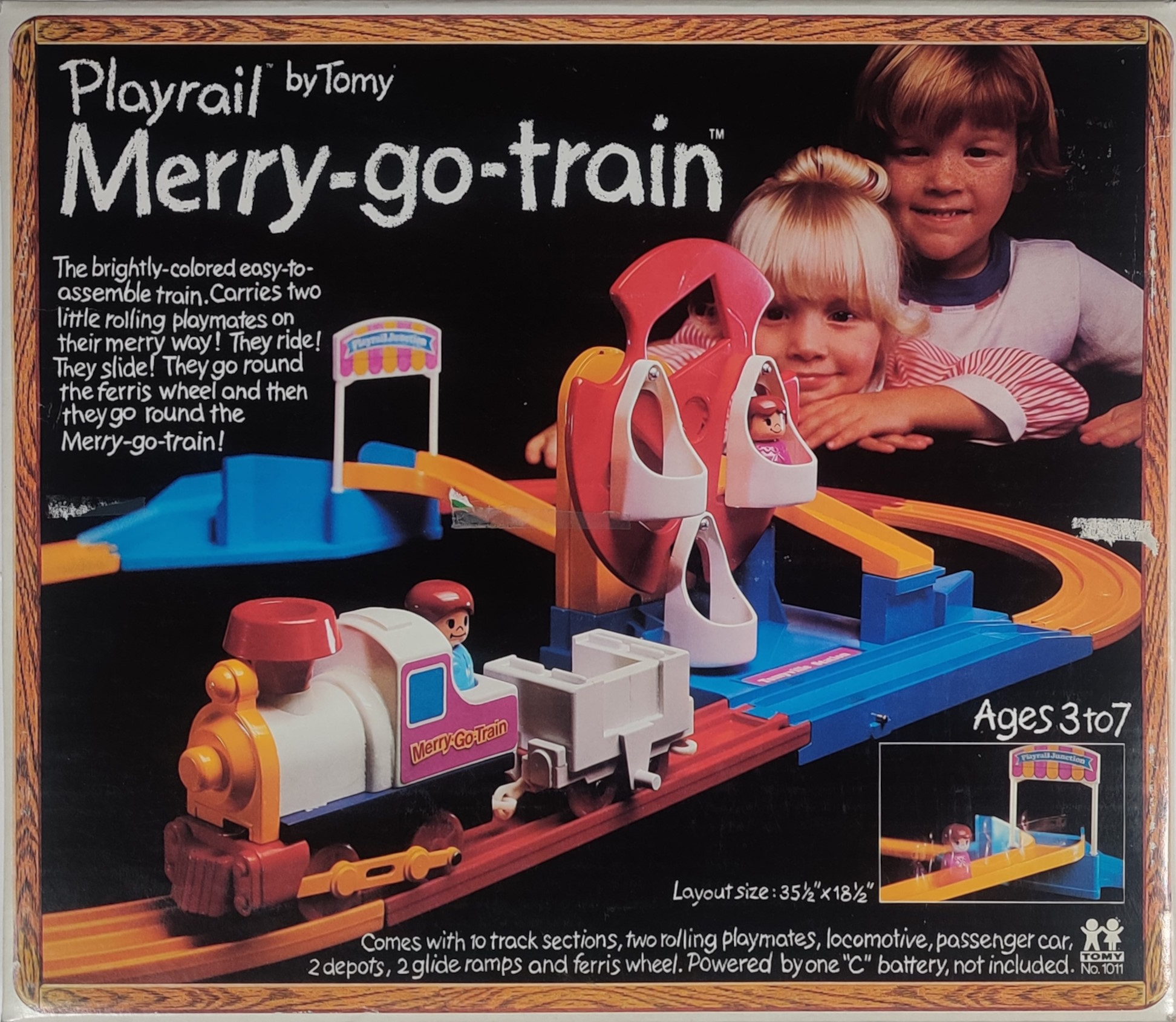
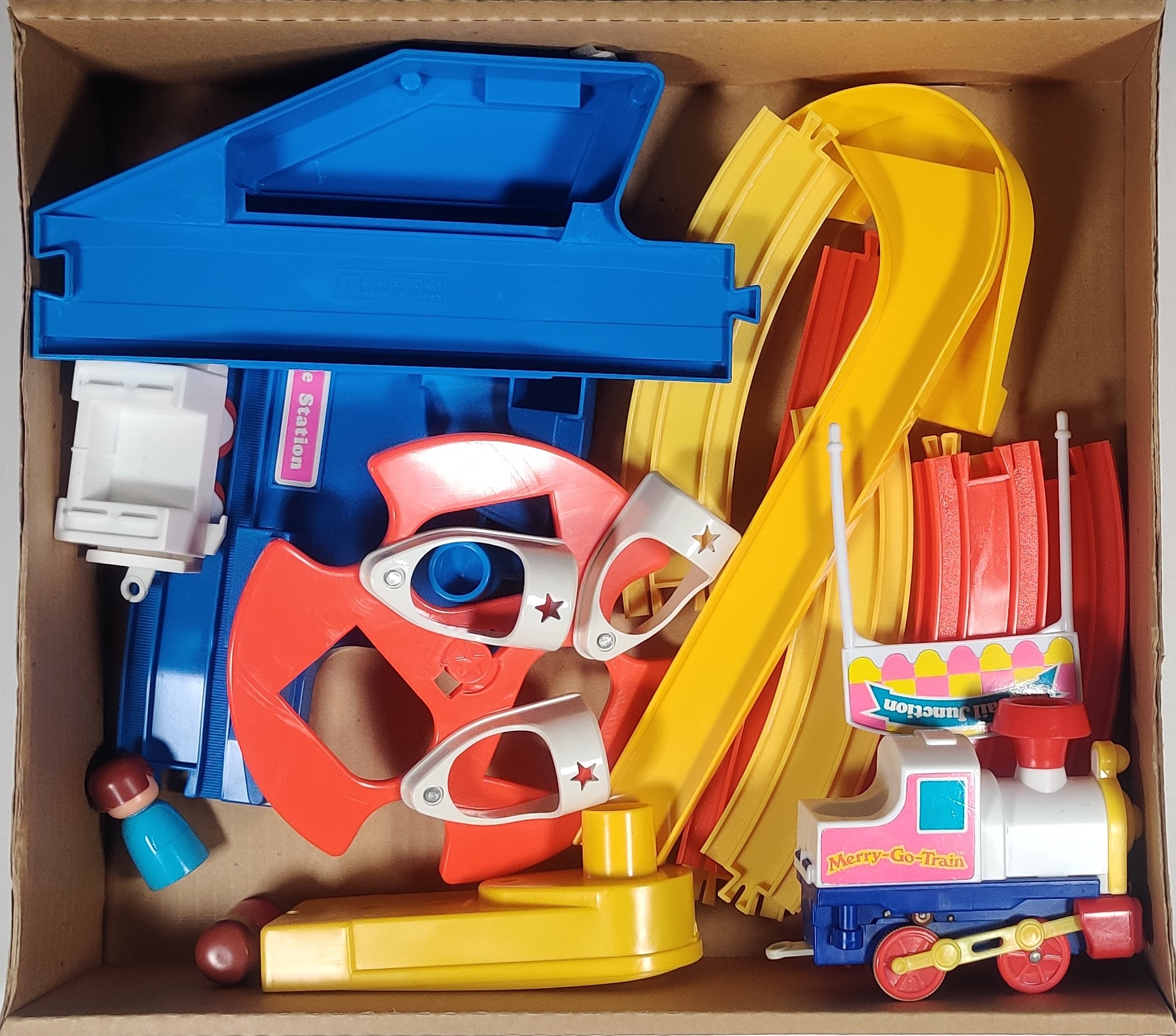
The Merry-Go-Train was released in the United States in the "Playrail" style box shown here. This set was first released in Japan as the "Ferris Wheel Set" (かんらんしゃセット) in 1977 with a smaller layout and some pieces molded in different colors. The smaller version of the set was later rereleased in Japan in the early 90s with a Disney theme and license in different colors under the Action Playland series of Plarail Land rereleases. Boxes for those and other Japanese Plarail Land releases can be found in the Plarail Museum. In Britain Palitoy released the Merry-Go-Train with the same color and layout variations as the American set but with some alternate stickers and in other parts of Europe Tomy sold the set as Tivoli Train also in the same colors as the other export sets.




The side of the box is dated 1976 but I suspect that like the Plarail equivalent these sets did not go on sale until 1977. Most likely it was developed throughout 1976 and went into production in late 1976 or early 1977. It is interesting that the two series (Plarail Land and Playrail) were seemingly released fairly closely together and seemingly produced with both markets in mind. It seems that the Palitoy and Tivoli versions of this set may have come out slightly later. The box shows an earlier version of the Merry-Go train with the text in the side of the engine seemingly a separate piece of paper glued on and an earlier design of the passenger car. The box also refers to the rolling friends as rolling playmates.
Set contents
|
Quantity |
Item |
Photo |
|---|---|---|
| 2 pieces | "Merry-Go-Train" with passenger car (rim-drive American-style steam locomotive with gimmick car for rolling friends) |
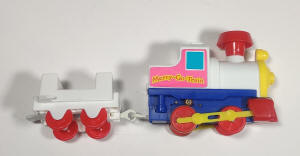 |
| 2 | Straight Rail (one each orange and yellow) |
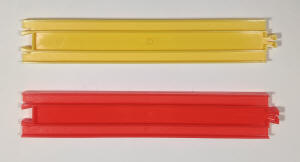 |
| 8 | Curve Rail (four each orange and yellow) |
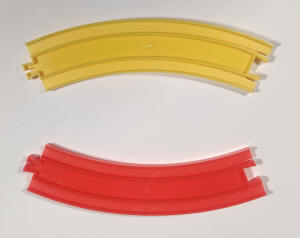 |
| 7 pieces | Ferris wheel with station drop-off with connecting ramp |
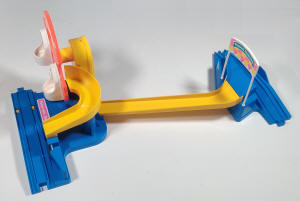 |
| 2 | Rolling "Friends" |
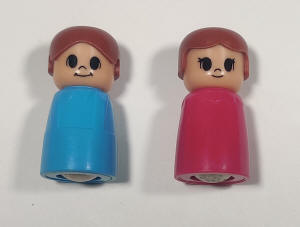 |
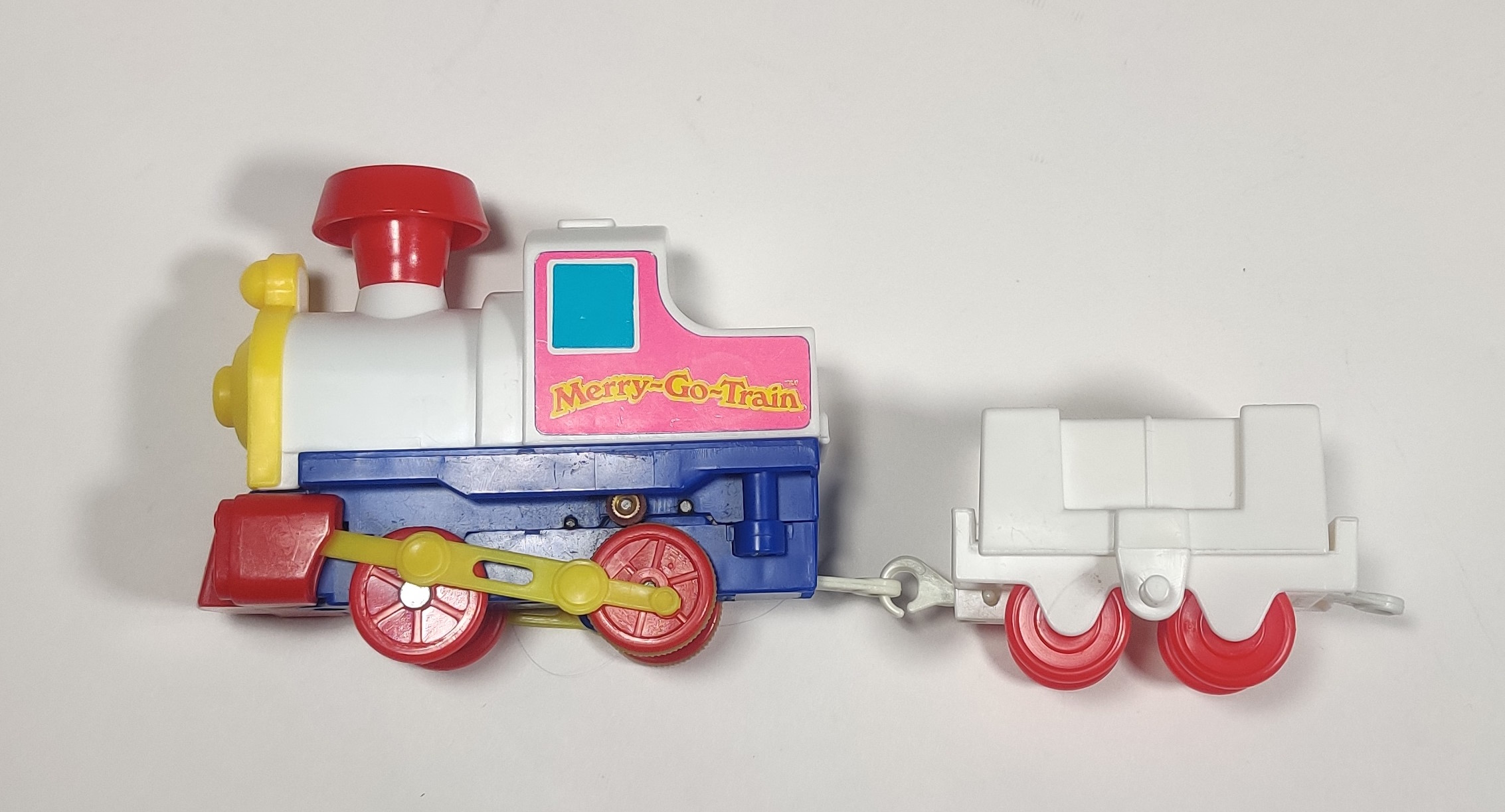
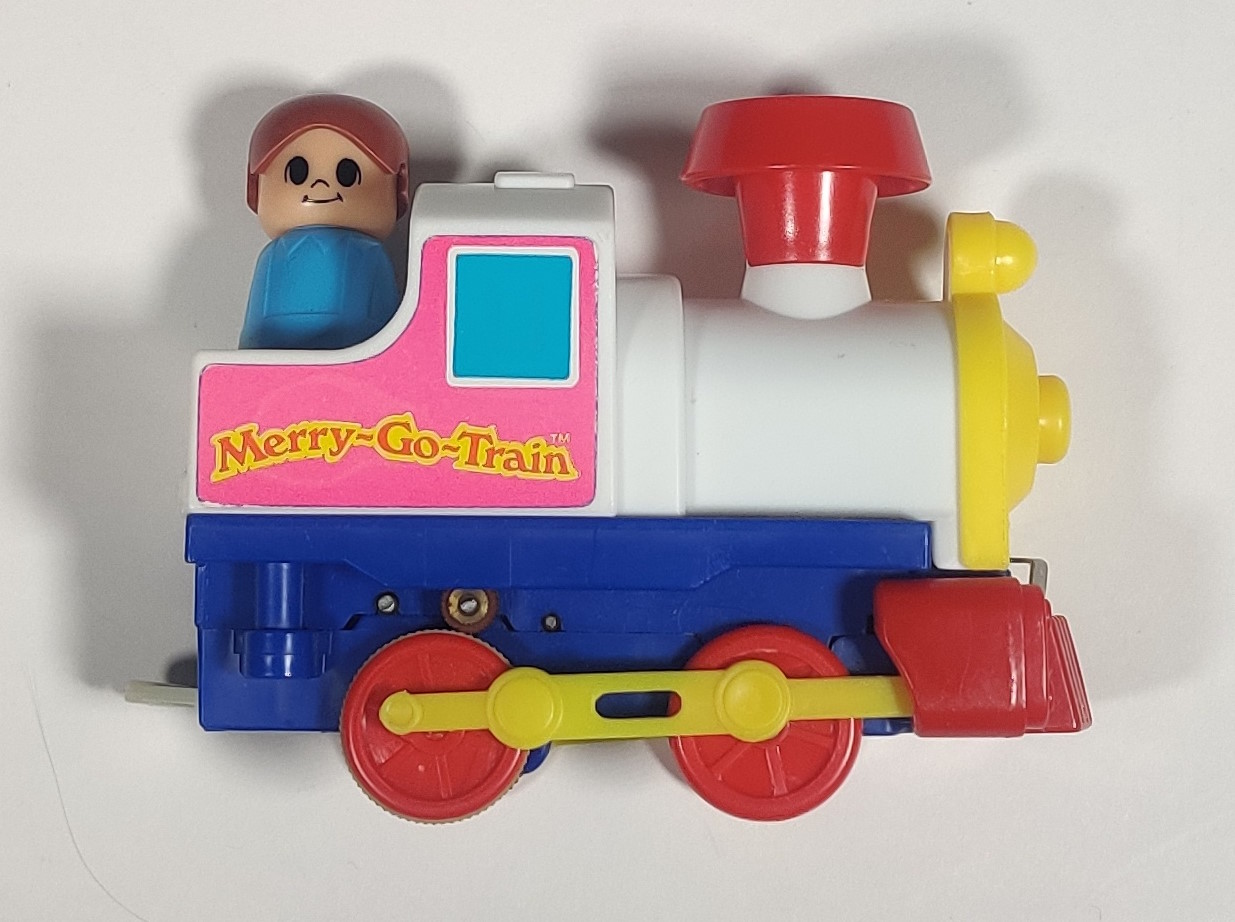
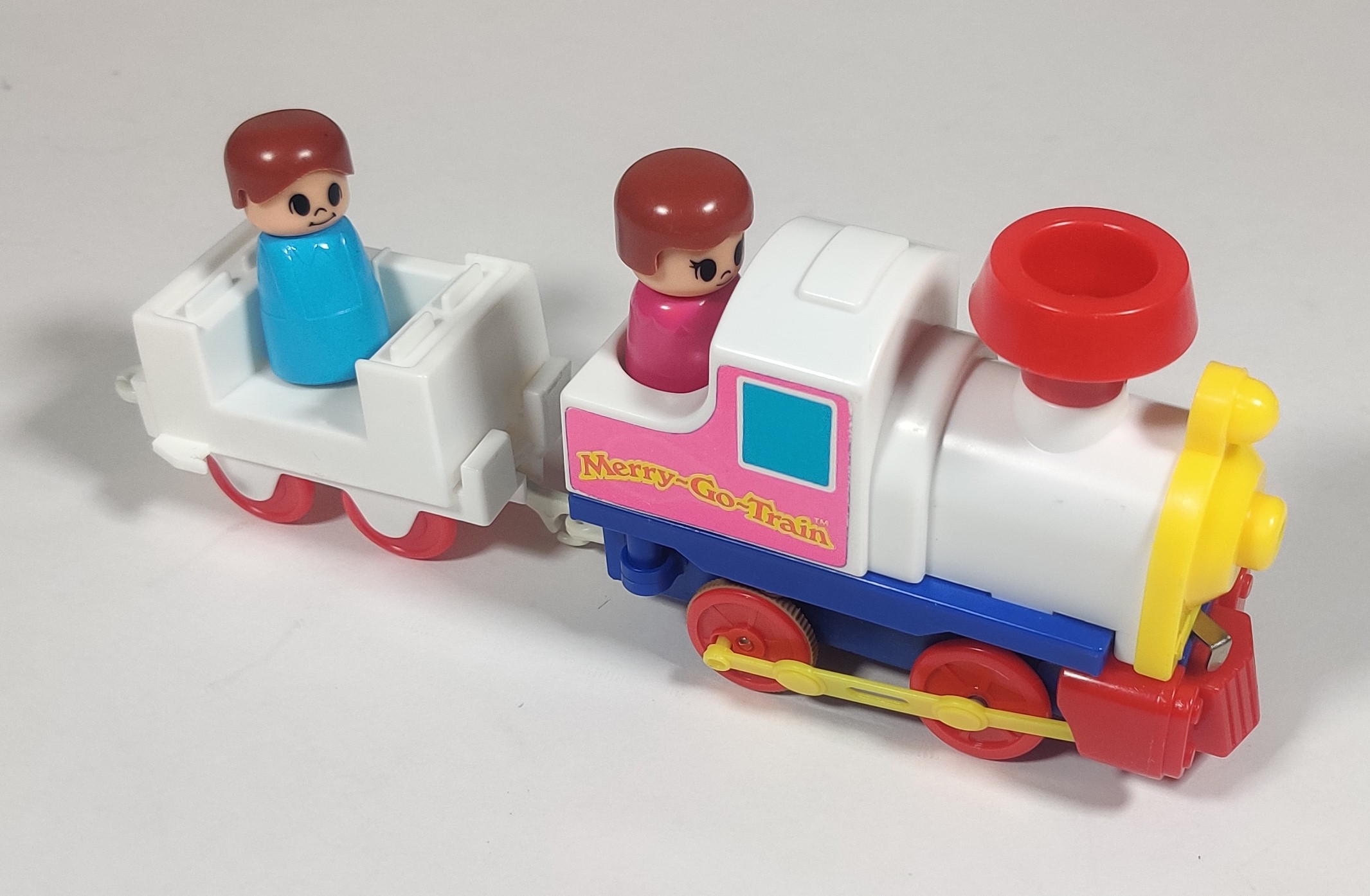
The train in this set is a cartoonish version of an American steam locomotive with a large smoke stack and cowcatcher. The locomotive has a round opening for a rolling friend to sit in. The "passenger car" is built to interact properly with the set gimmick and is thus somewhat odd, with trigger features sticking out from both sides. I do not particularly like the look of the car. The same style of engine and car was used in the Merry-Go-Copter.
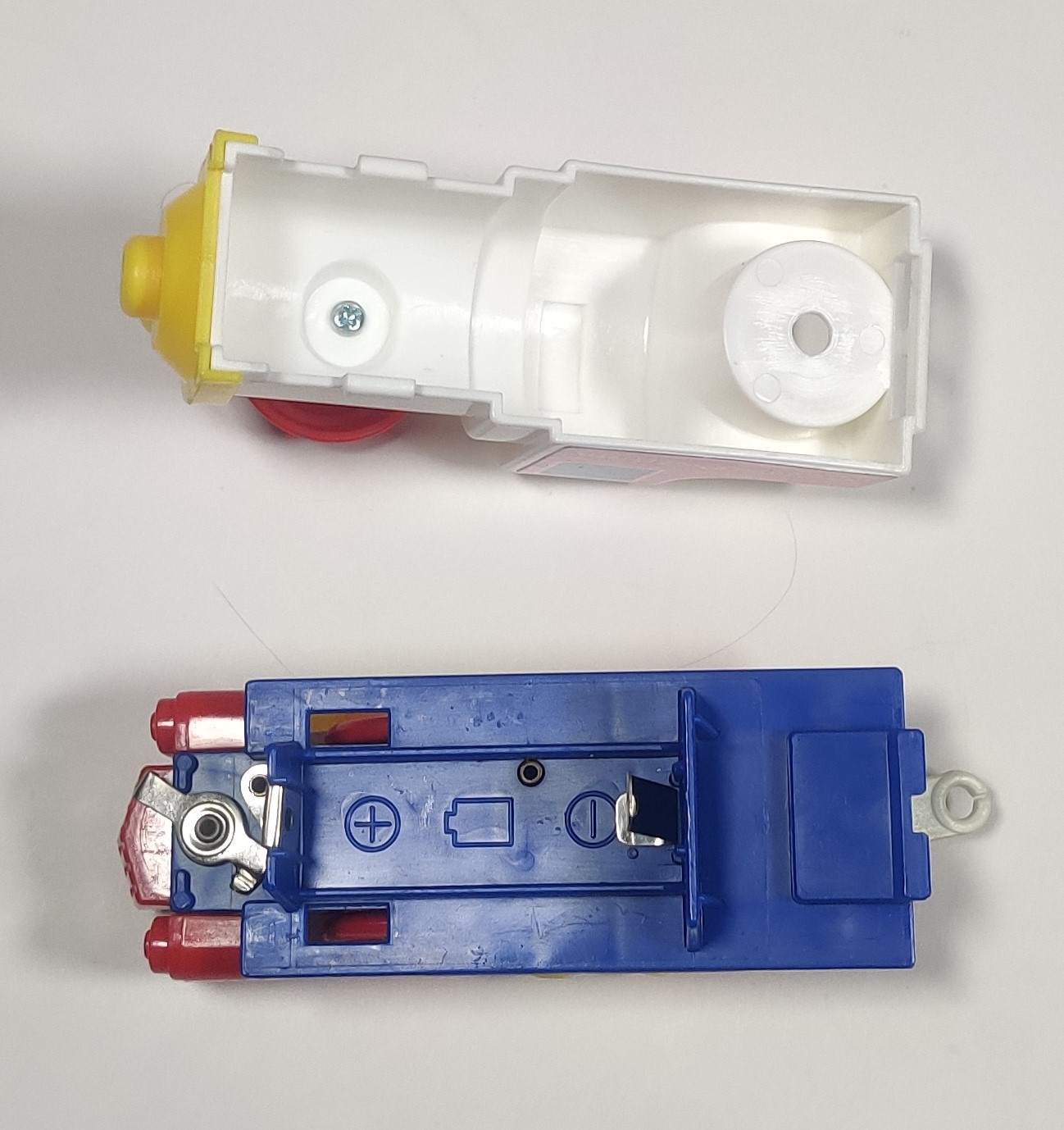
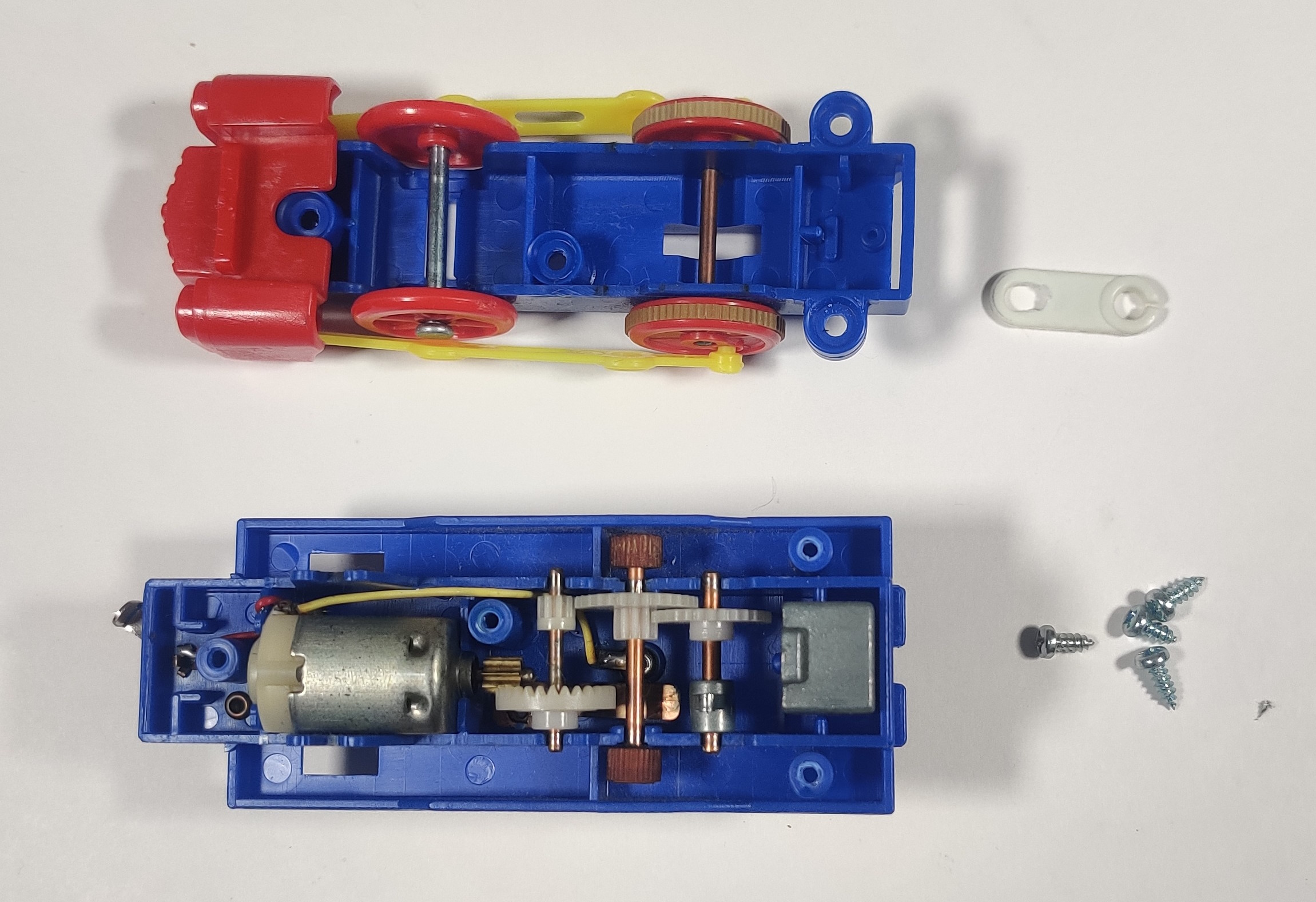
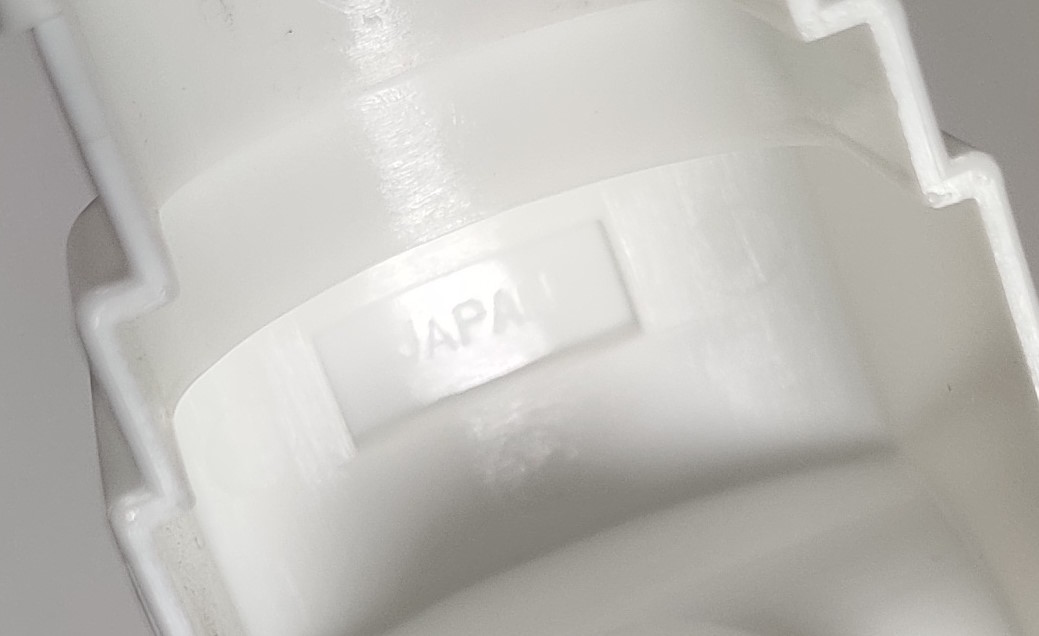
The train in the American and, from what I have seen, Japanese releases of these sets are made in Japan and use a rubber rim-drive gearbox similar to other "old power" friction-drive gearboxes. The wheel's traction tires are the same size that Tomy has used for decades and new replacements are still available, while the smaller tires can be replaced by rubber tubing. The bottom of the chassis and inside of the body shell are both marked Japan.
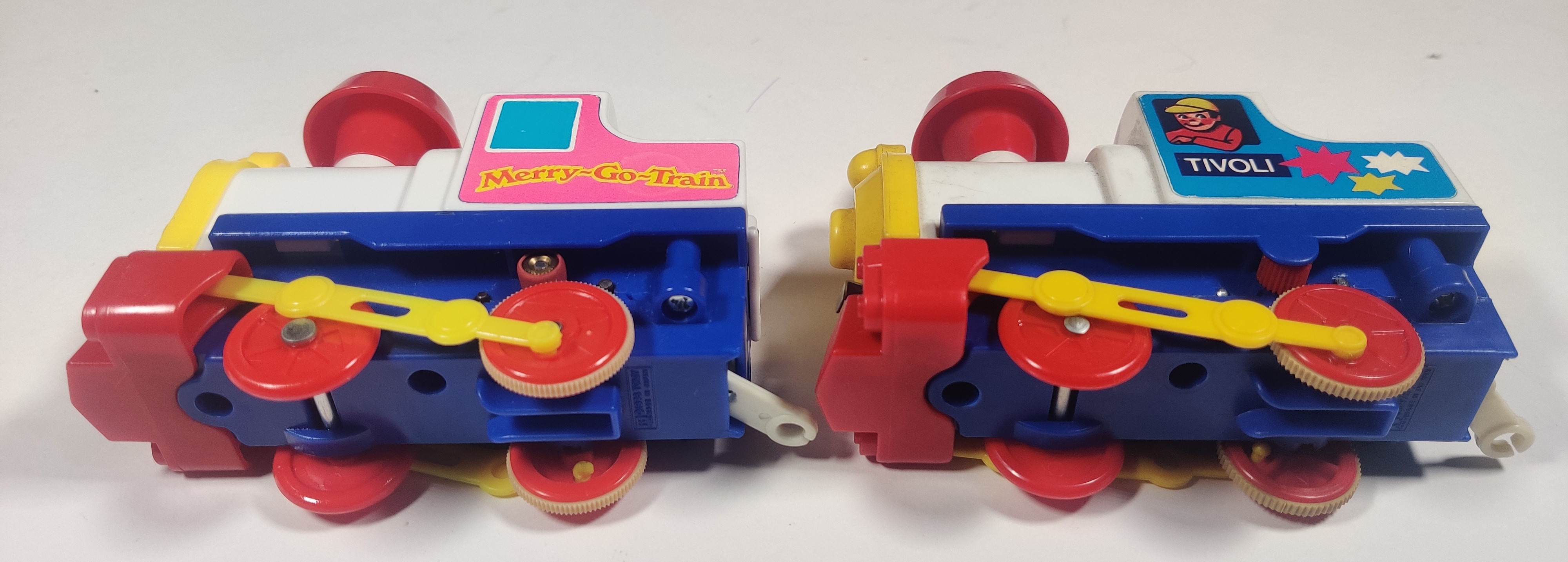
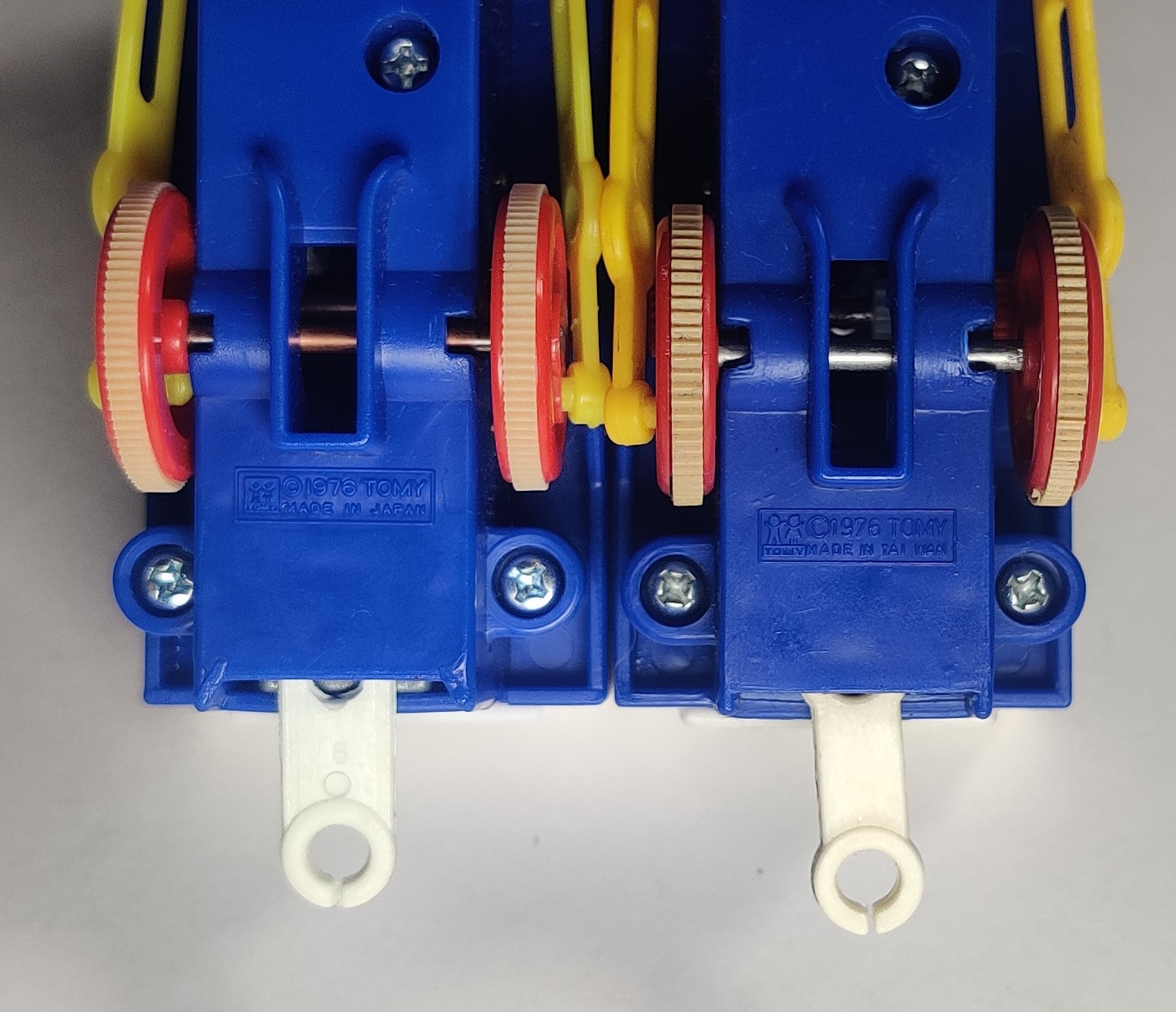
Although I do not have any complete European releases, I do have some of the Tivoli engines. It seems that production of export Plarail Land sets shifted to Taiwan in later 1977 or 1978 as the American and European releases of Merry-Go-Copter from 1978 are also all made in Taiwan. There are actually differences in parts of the tooling around the rear chassis screws as well as the Tomy logo and some parts like the rear coupler change to an older, odder style of coupling - perhaps because Tomy did not want to shift still-in-use rear coupler toolings to Taiwan?
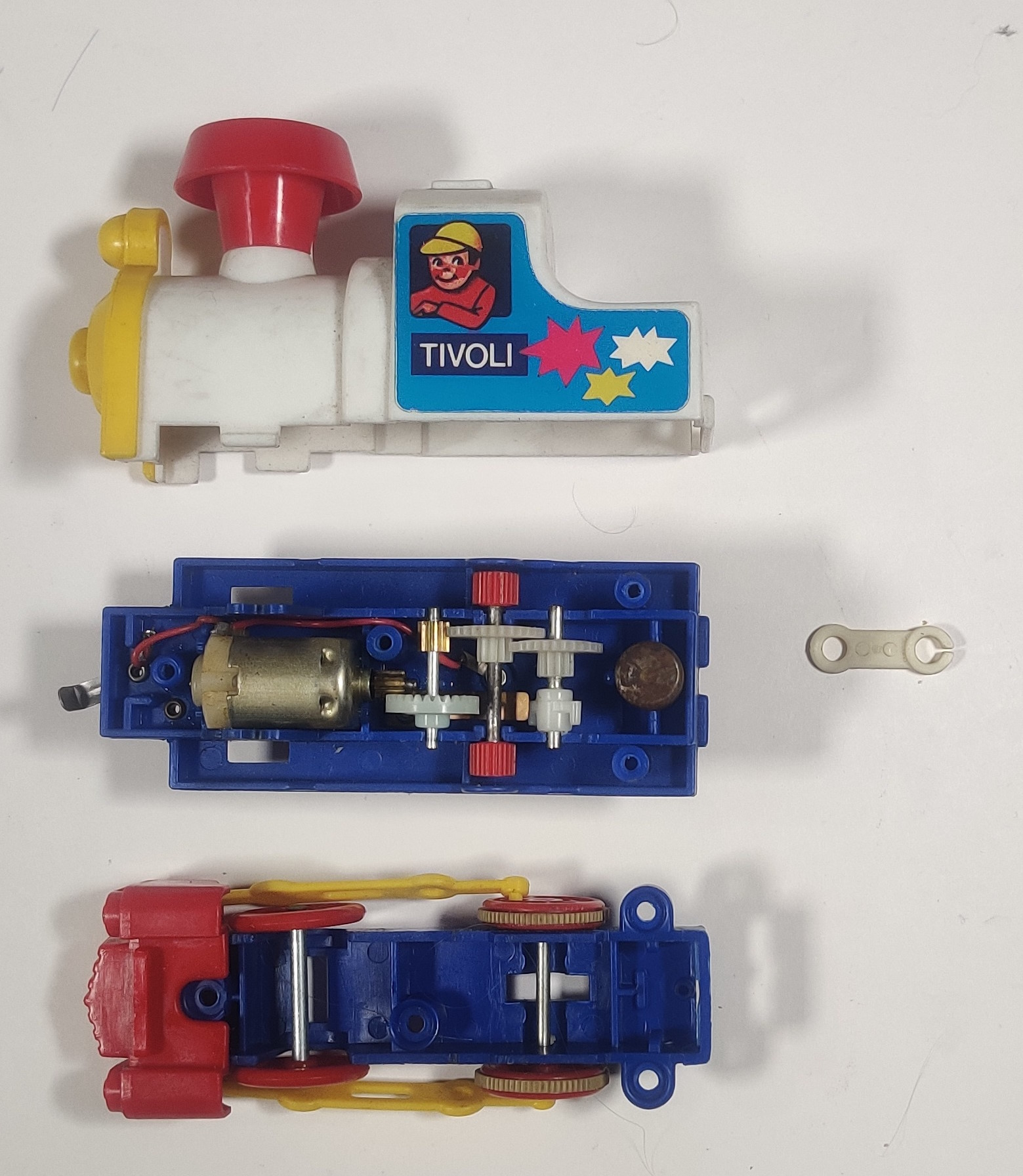
A few changes have been made to the drive system - externally, the chassis has been updated to have a guard covering the outside of the friction-drive mechanism sticking out of the sides of the gearbox. This was actually a later addition, as I have a Tivoli train from a Tivoli Copter set that is made in Taiwan but does not have this guarding and I have also seen the Tivoli Train set with the guardless chassis as well as the Palitoy version of the set with rubber drive tires and no guard.. A potentially more useful change is the replacement of the rubber rim-drive tires with plastic rollers similar to those used on the pickups inside the Ferris wheel base. This means there is less rubber to perish and go bad over time, although incidentally I have several Merry-Go engines that have still-rubbery traction tires, although they are not as grippy as they probably once were. Inside this later Taiwan gearbox there is a round weight used on all Taiwan production chassis I have seen (this was a rectangular weight in the Japan-made version). More details about the Merry-Go set gearboxes can be found here.
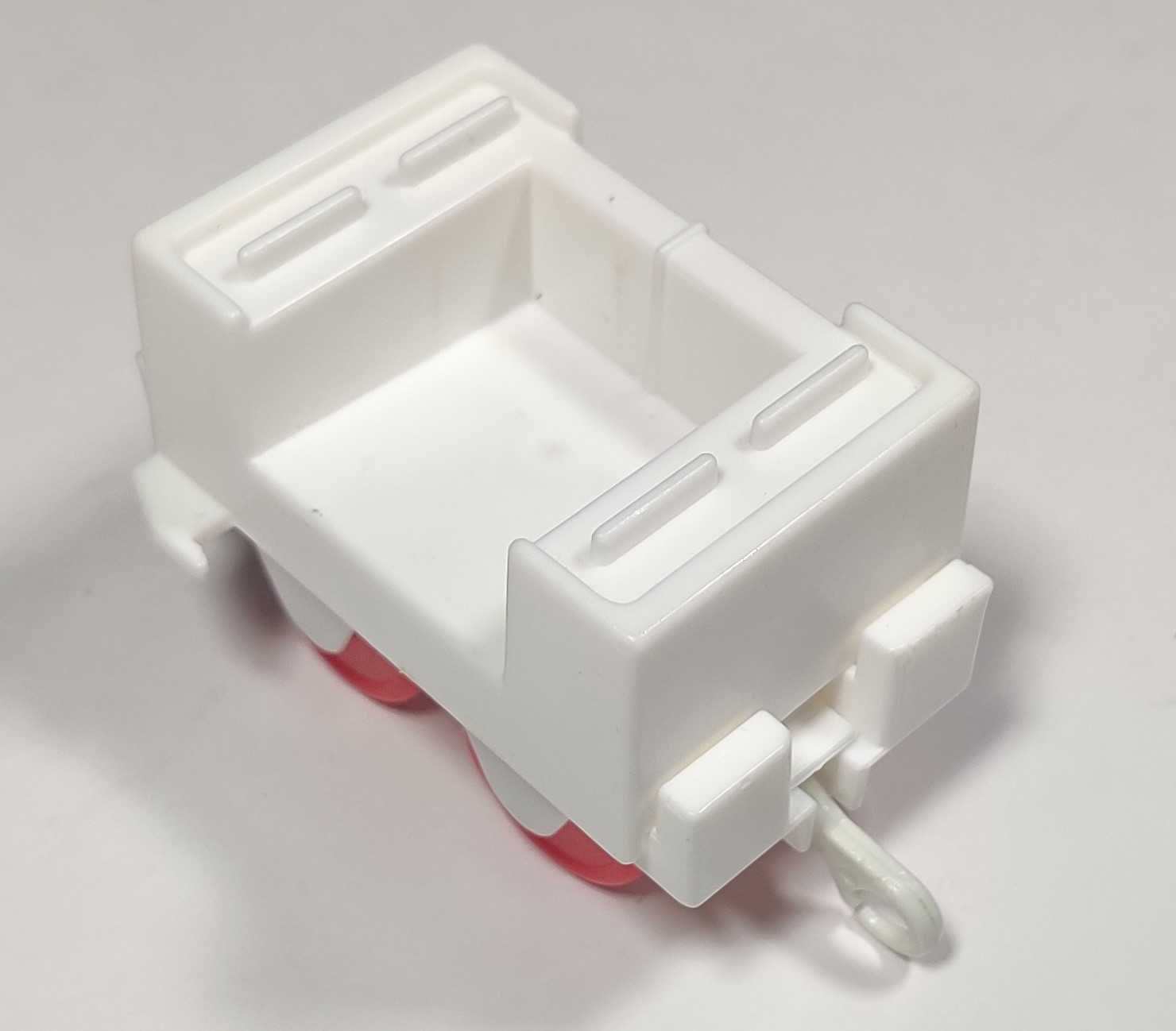
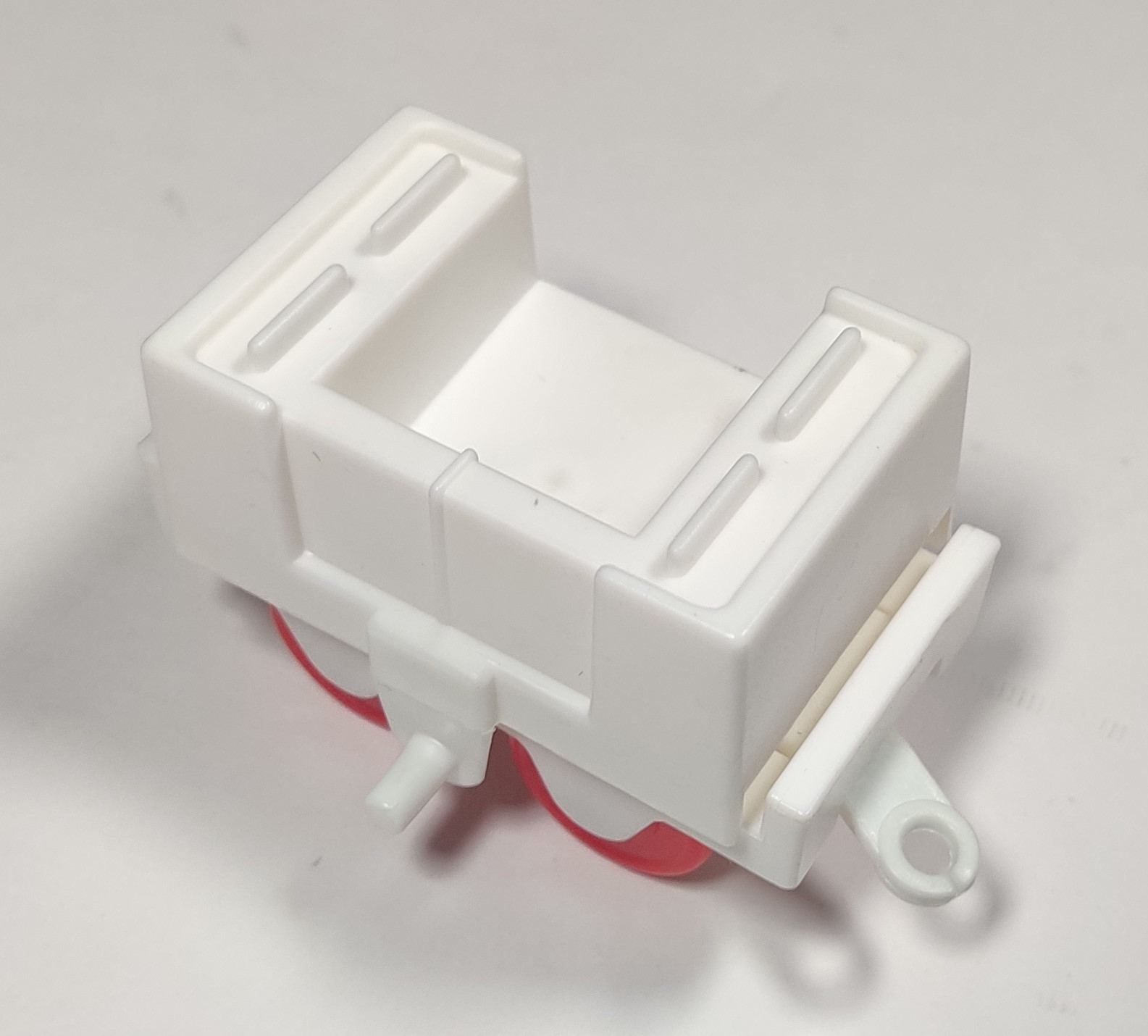
The passenger "carriage" is fairly simple and somewhat odd-looking. The main purpose of the car is to accomplish the gimmick of picking up and dropping off the rolling figures and it has a molded catch on the spring-loaded platform that engage with the molding of the station platform. The hanging peg is bumped upwards by the dropoff station and tilts the rolling friend out of the car.
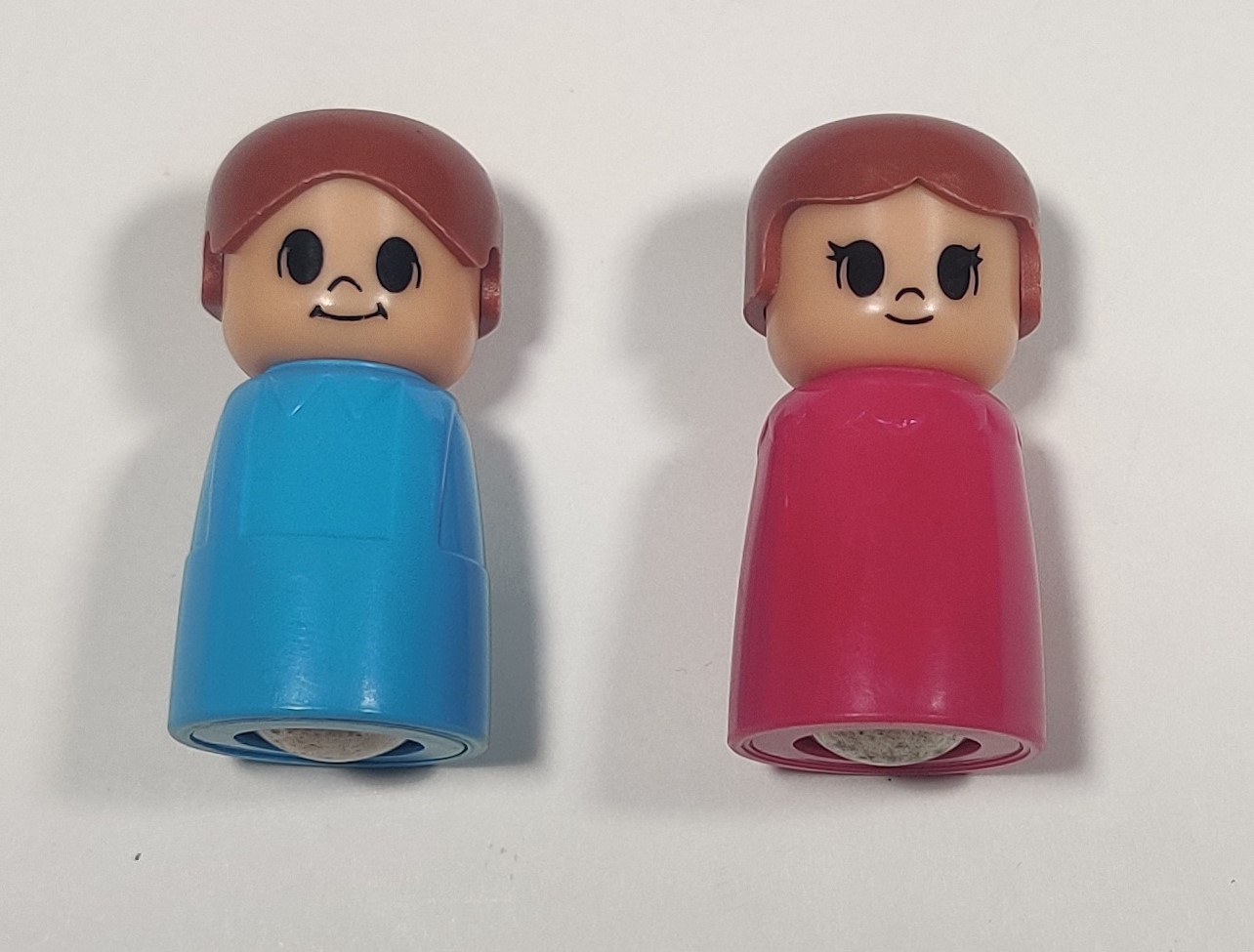
Two "Rolling Friends," also called rolling playmates on the box, are included. These small dolls have ball bearings in the base that allows them to roll down the ramps and onto the train and Ferris wheel.
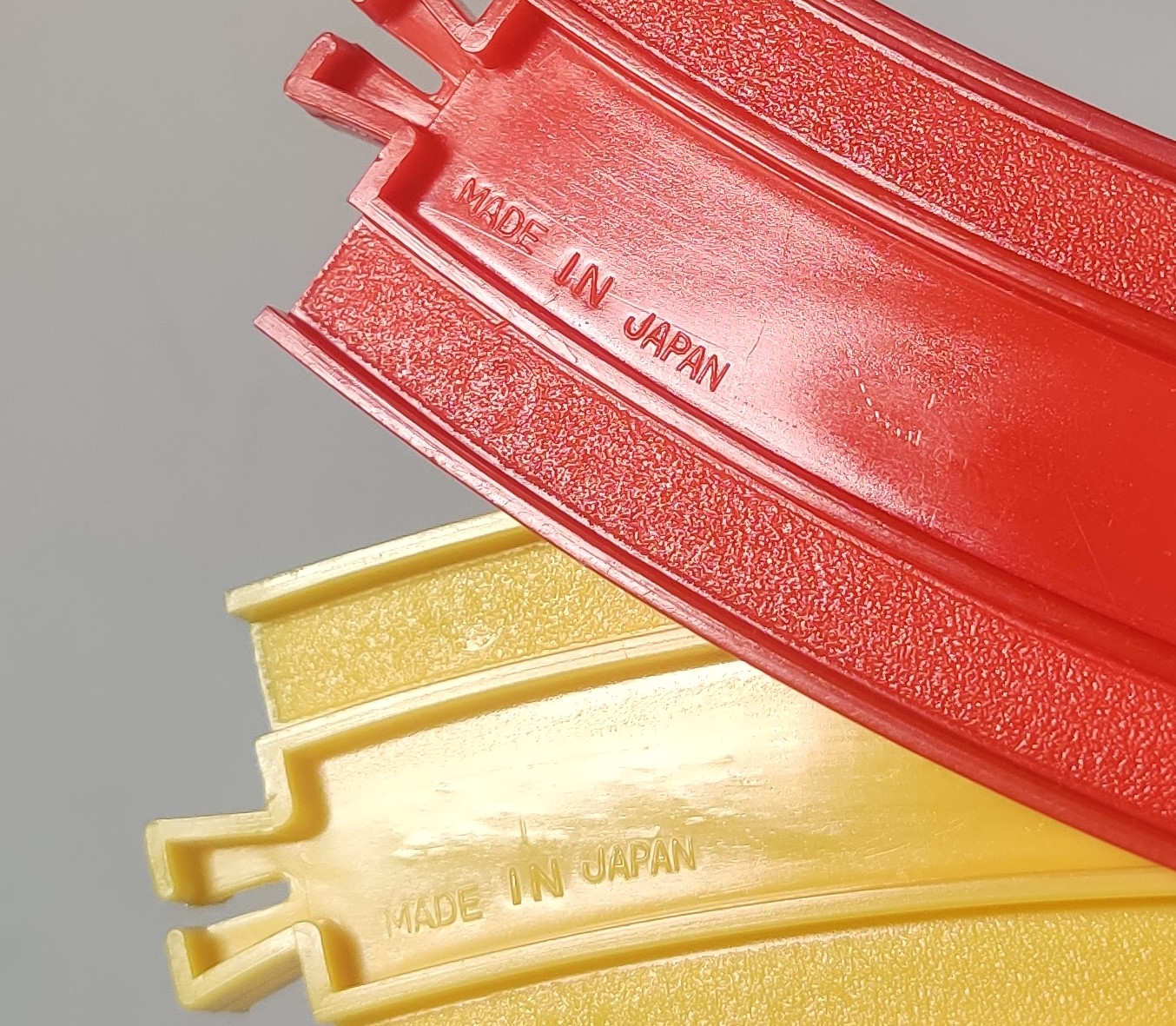
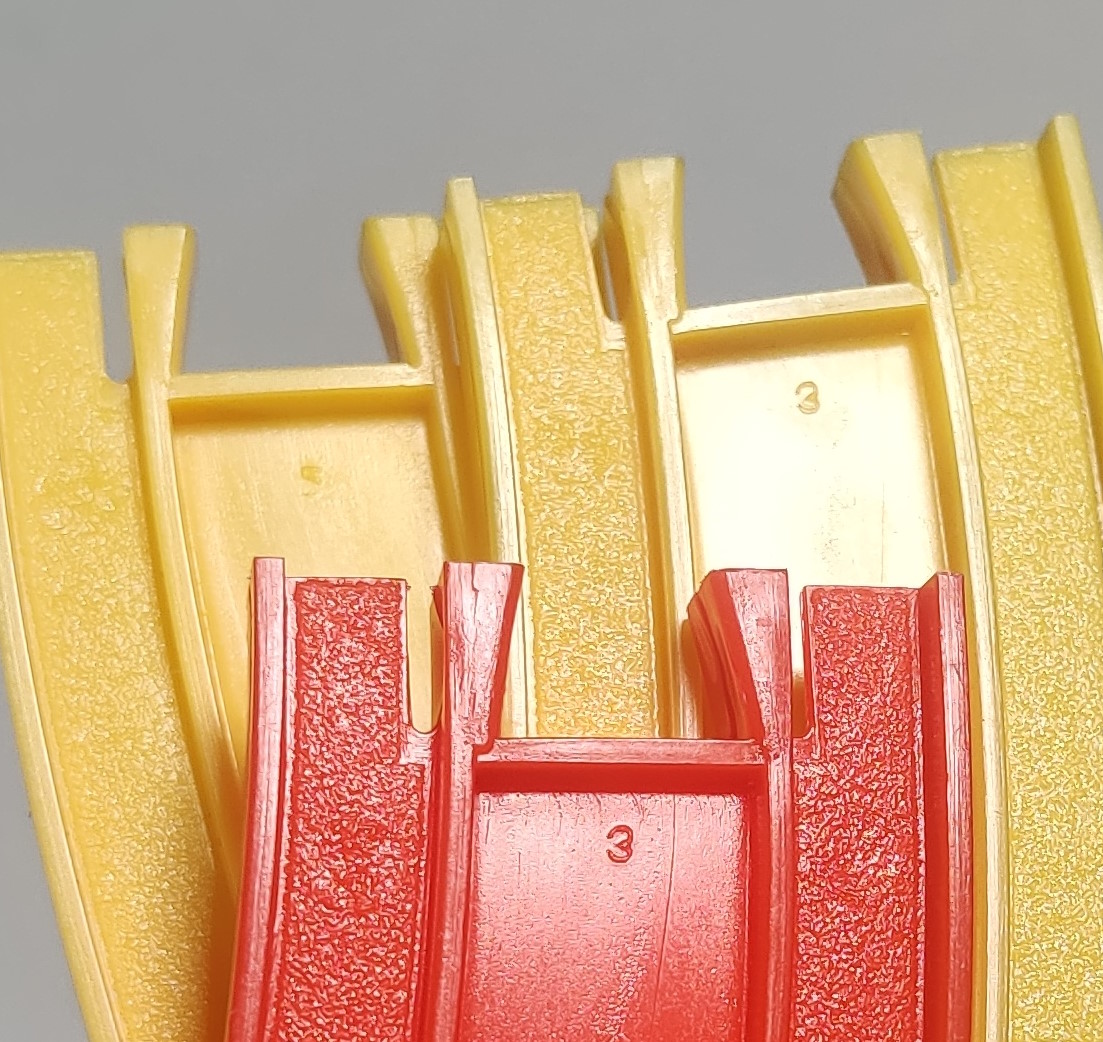
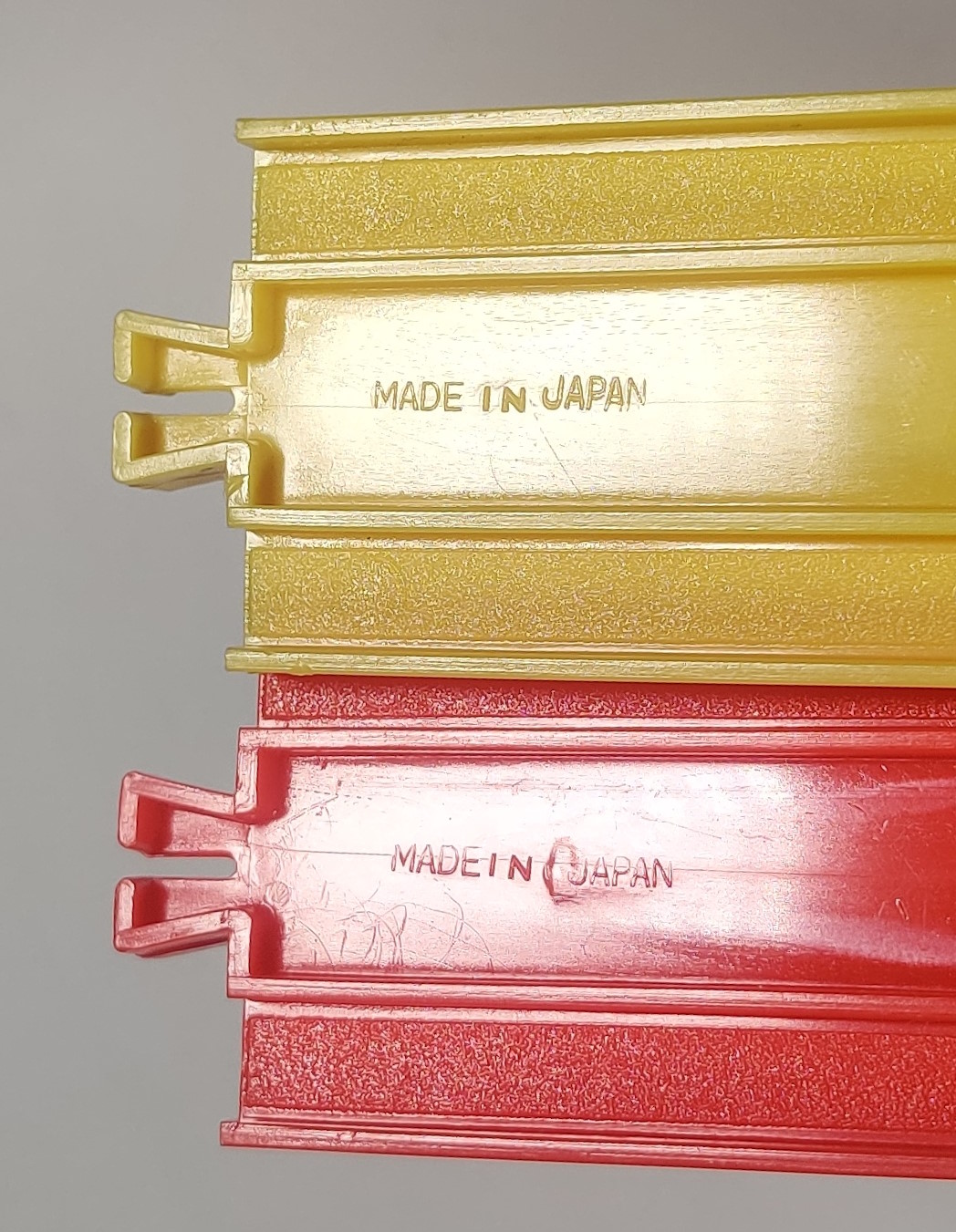
The track in this set is roughtop and marked made in Japan with molding marks similar to other late 1970s rail.
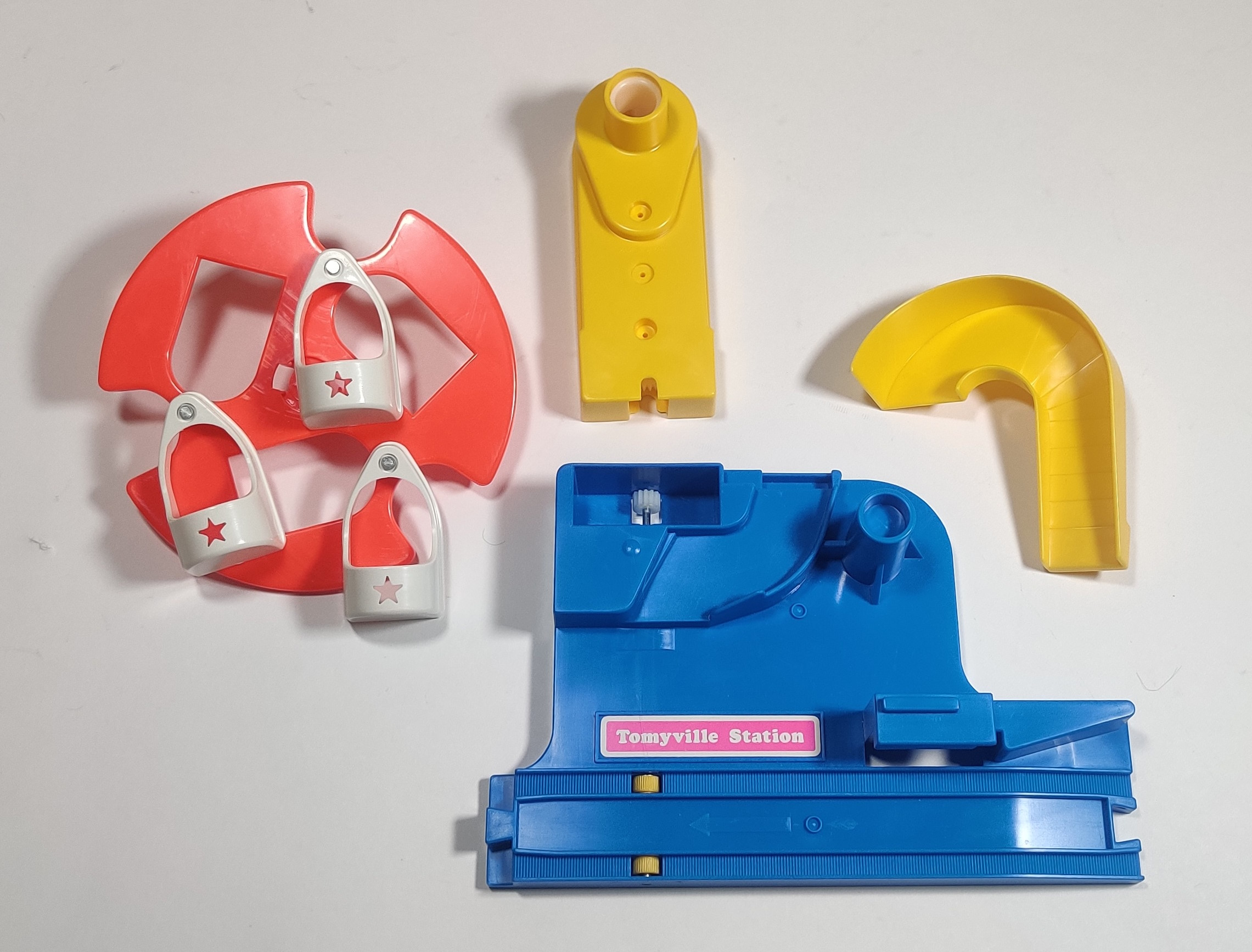
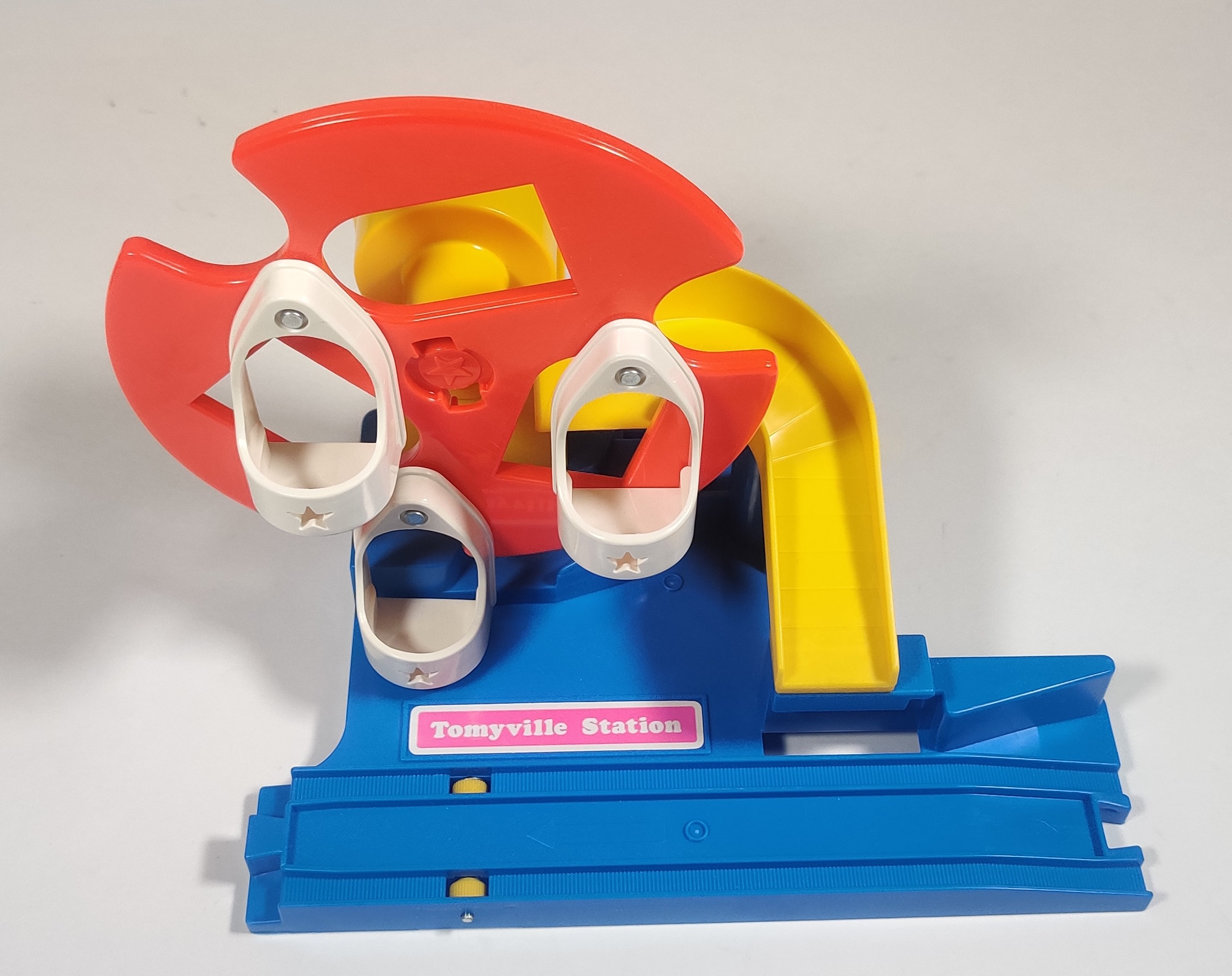
The "Tomyville Station" is the main destination of the set and is made up of four components. A yellow gearbox slots into the friction-drive mechanism in the base and powers the Ferris wheel, which has three rotating compartments. A yellow slide takes the rolling dolls out of the Ferris wheel and deposits them into the train's carriage.
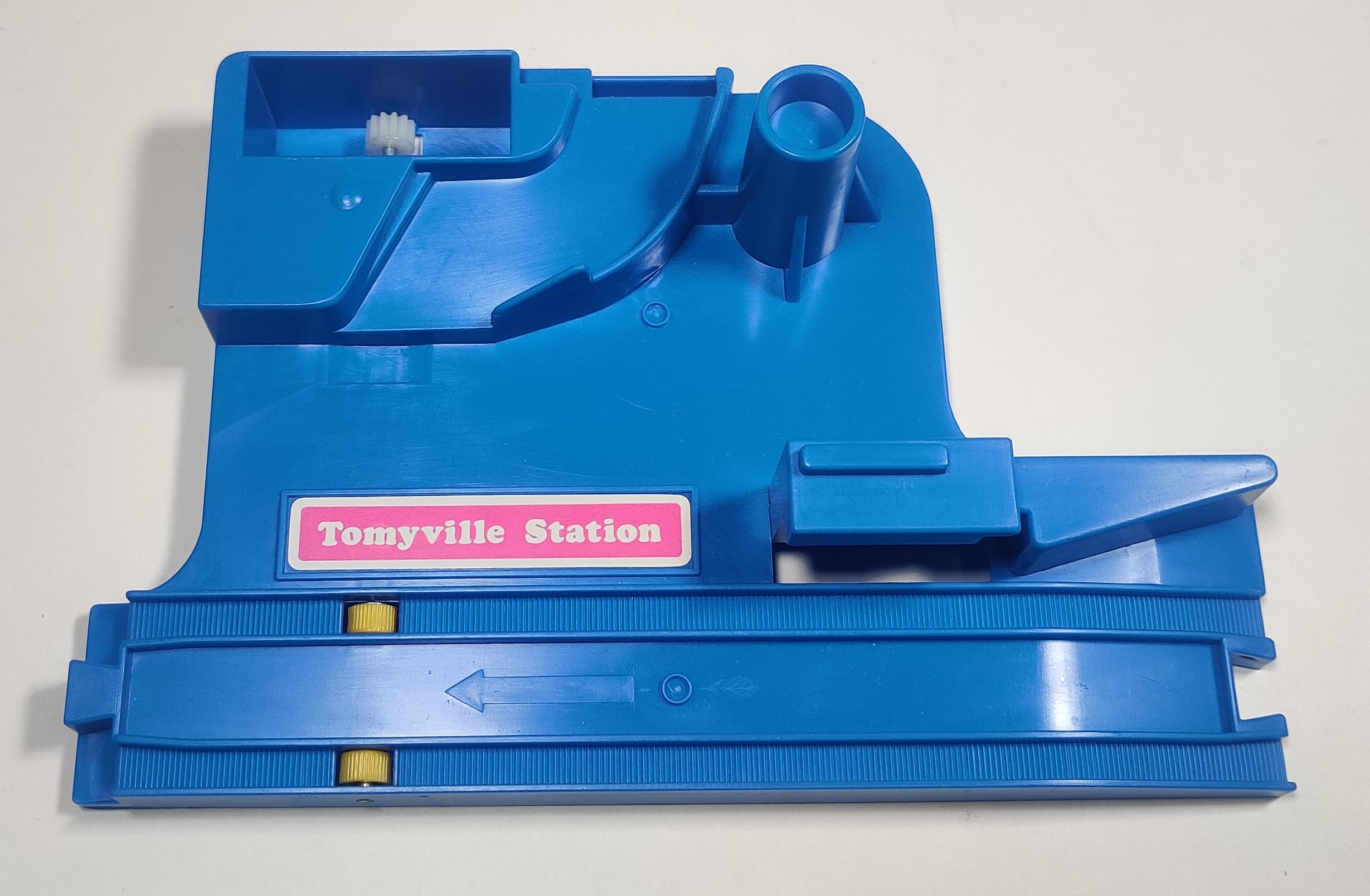
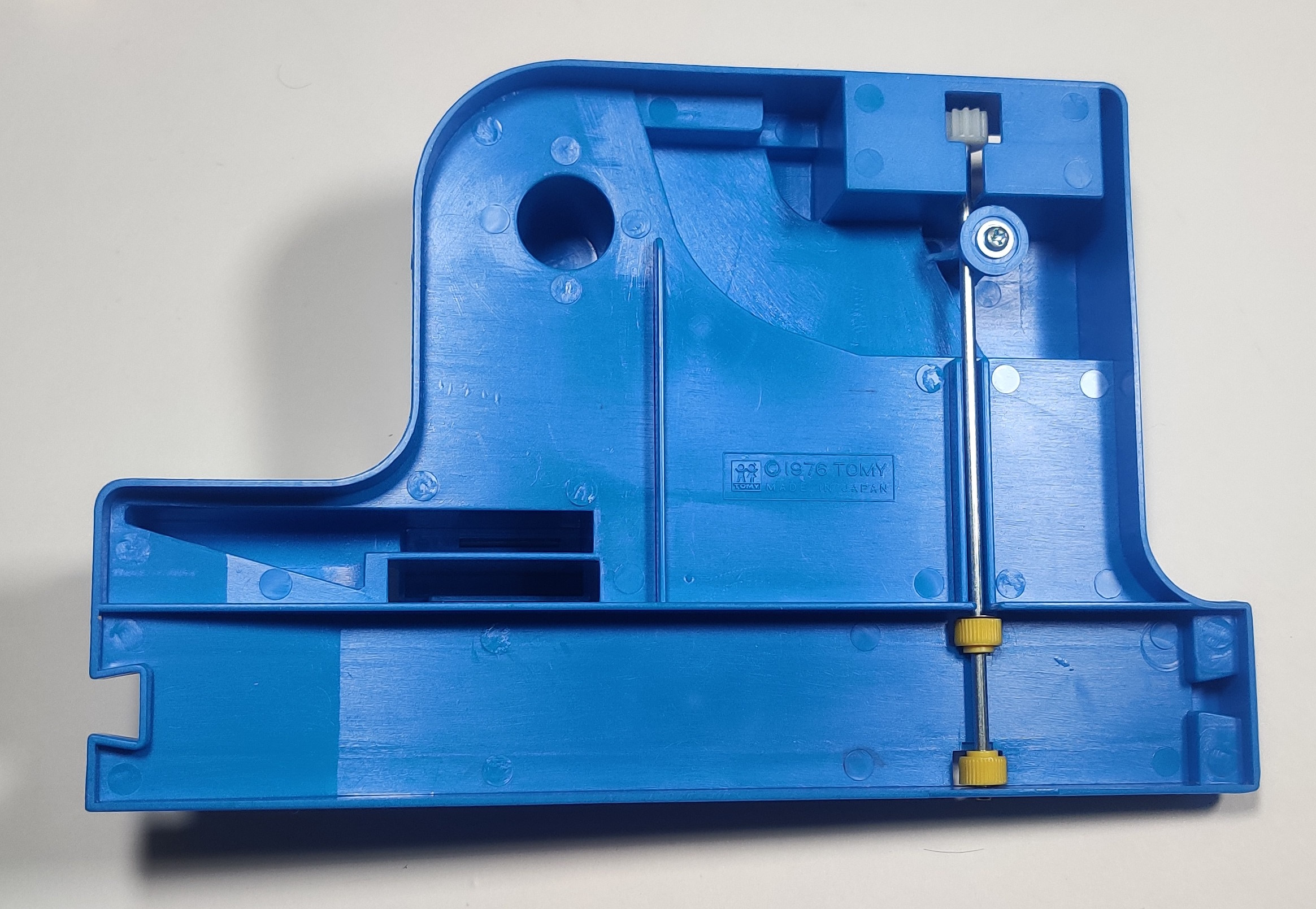
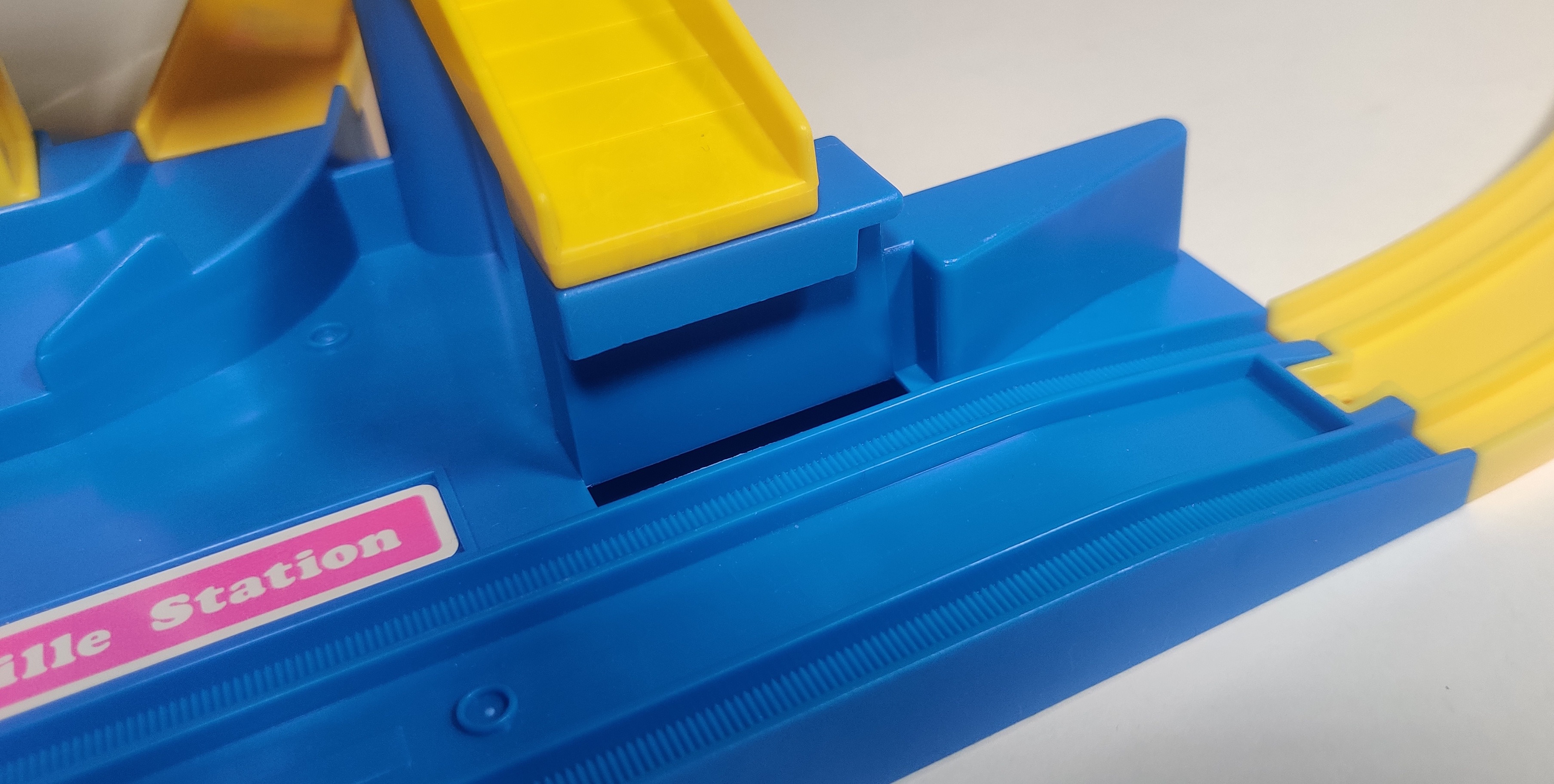
The base mold is marked 1976 and made in Japan and also has the boy and girl Tomy logo of the era. The station base has a catch molded into it that keeps the train in place until the rolling doll weighs the catch on the car down and lets it slip under the molded lip in the station.
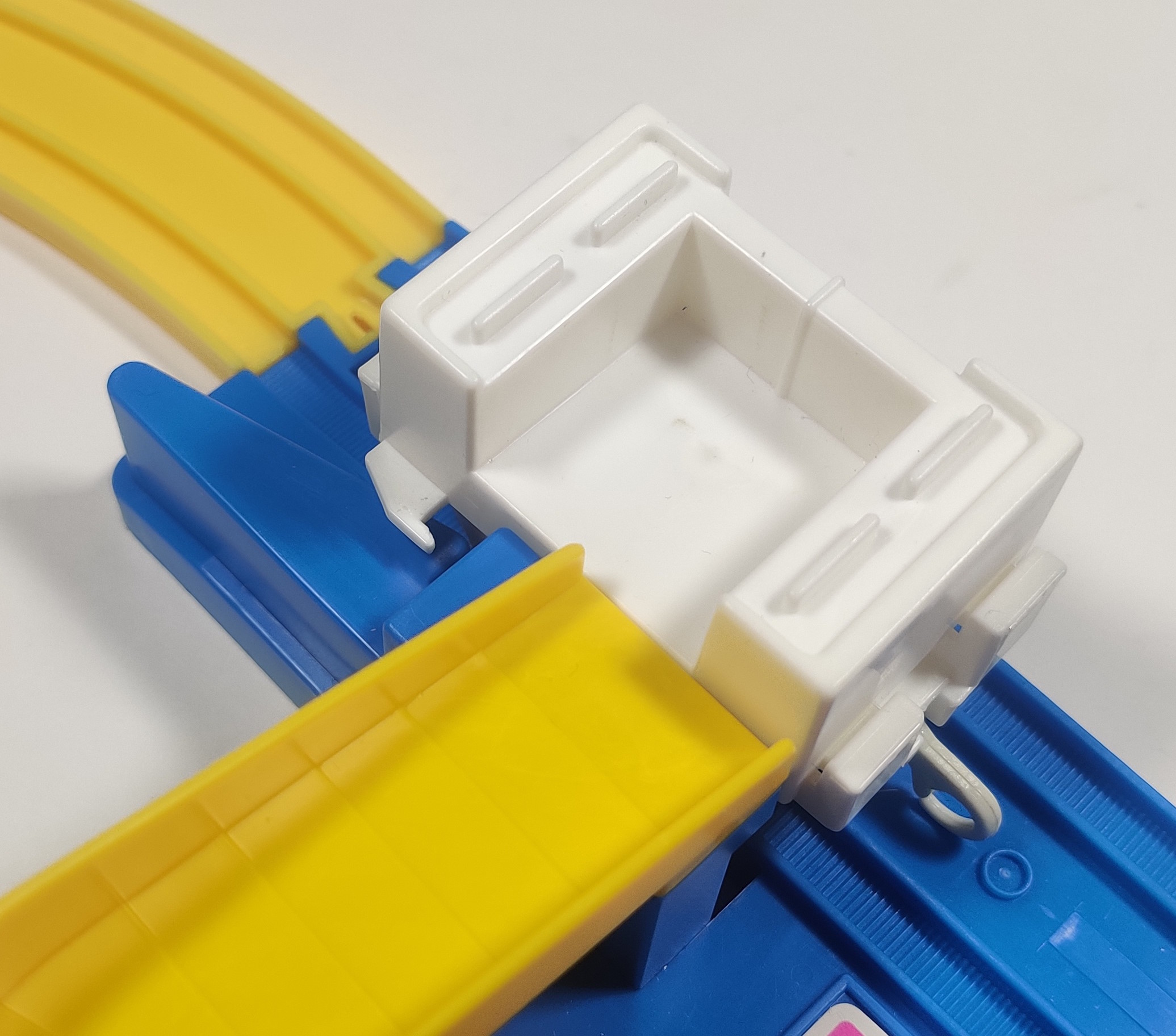
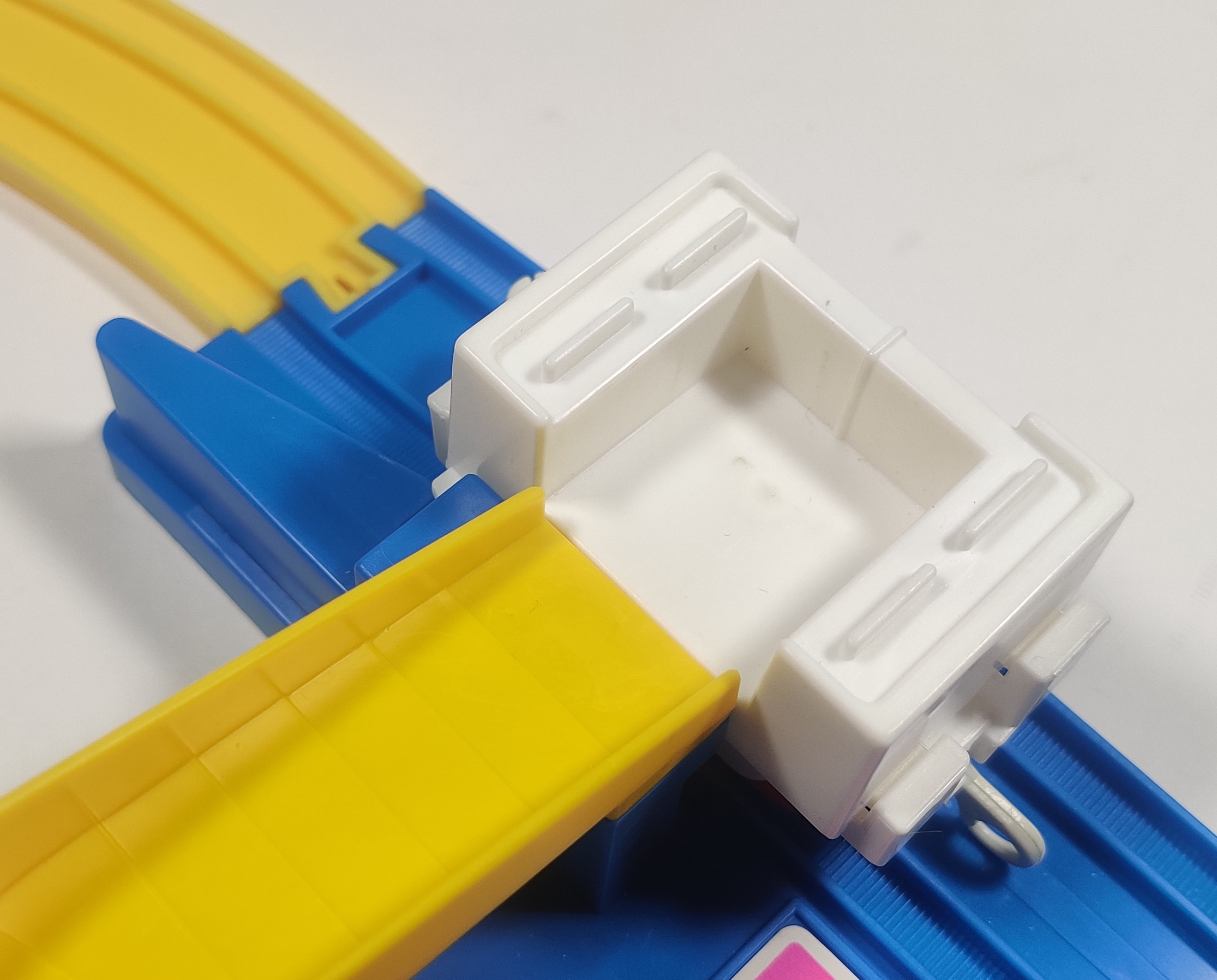
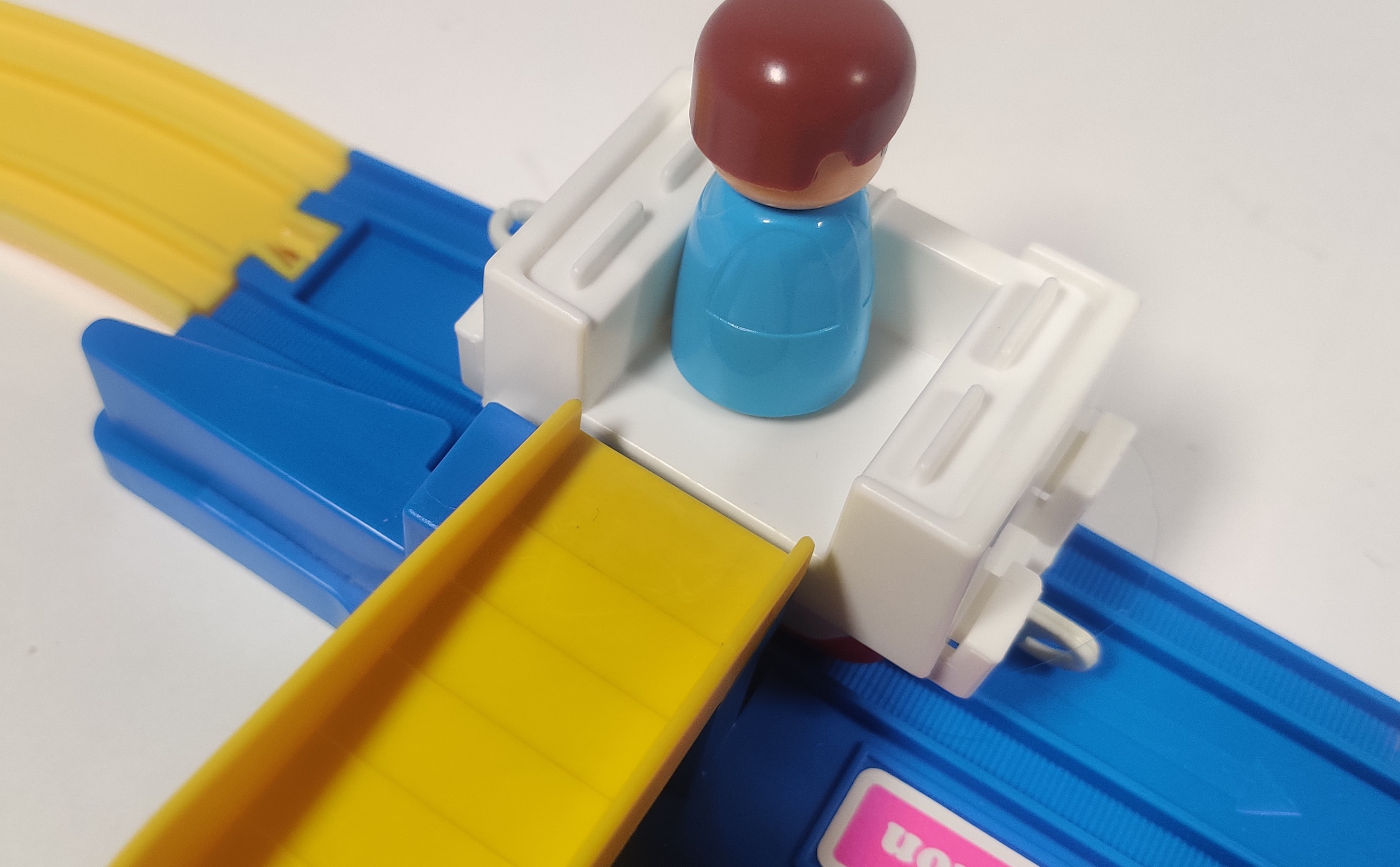
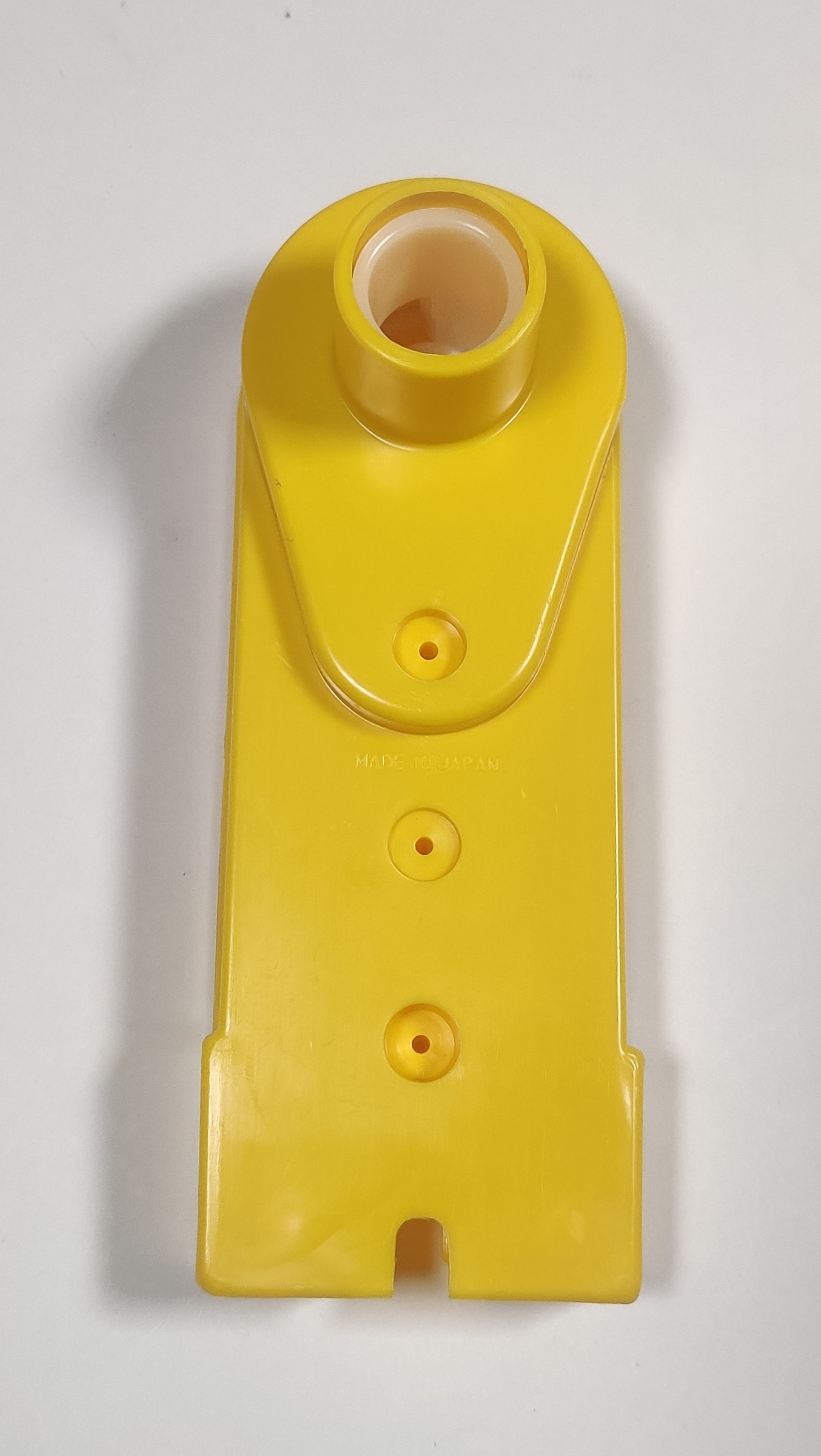
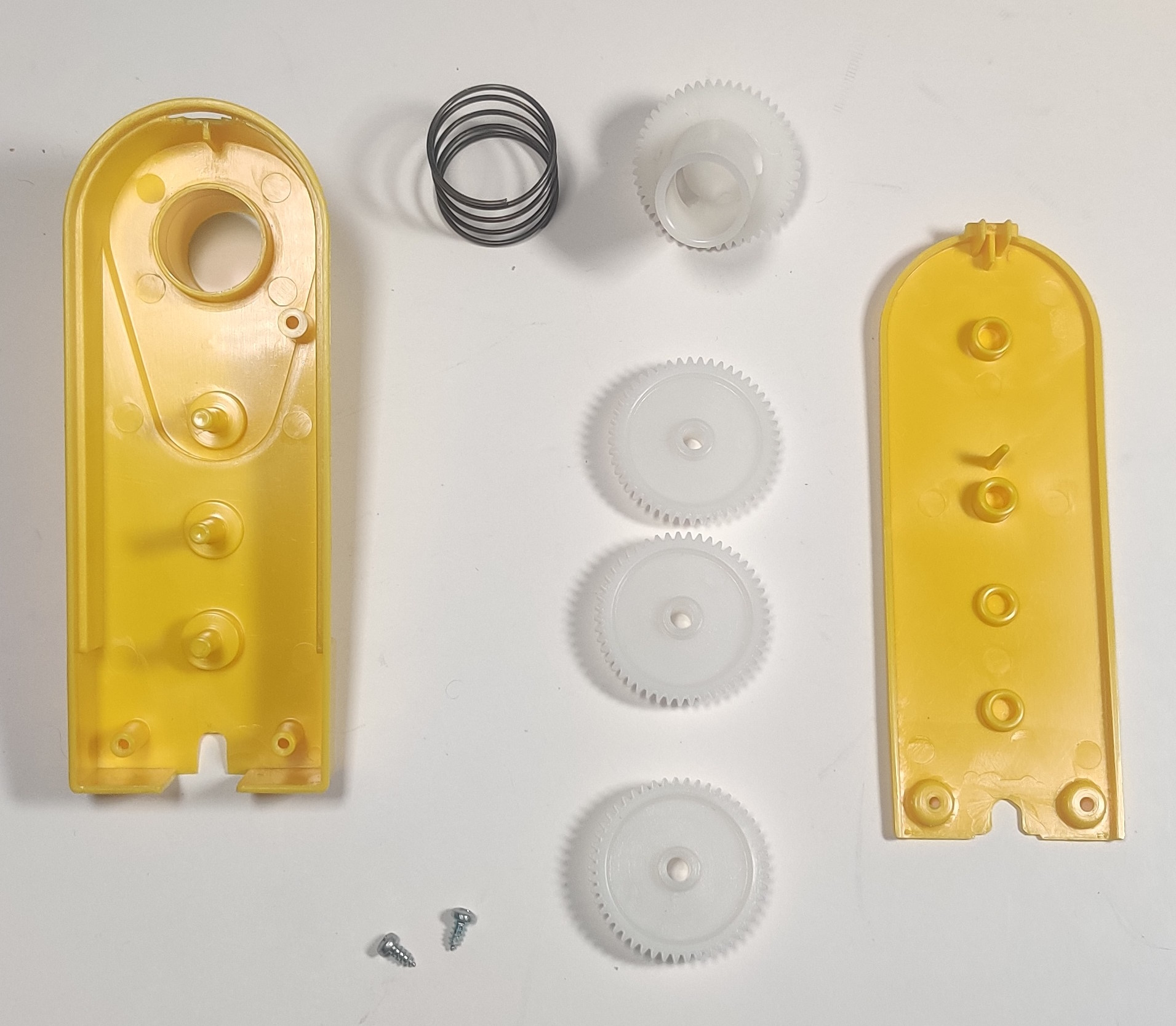
The gearbox section fours a four-stage reduction that run up to a spring-loaded "clutch" that holds the Ferris wheel disc.
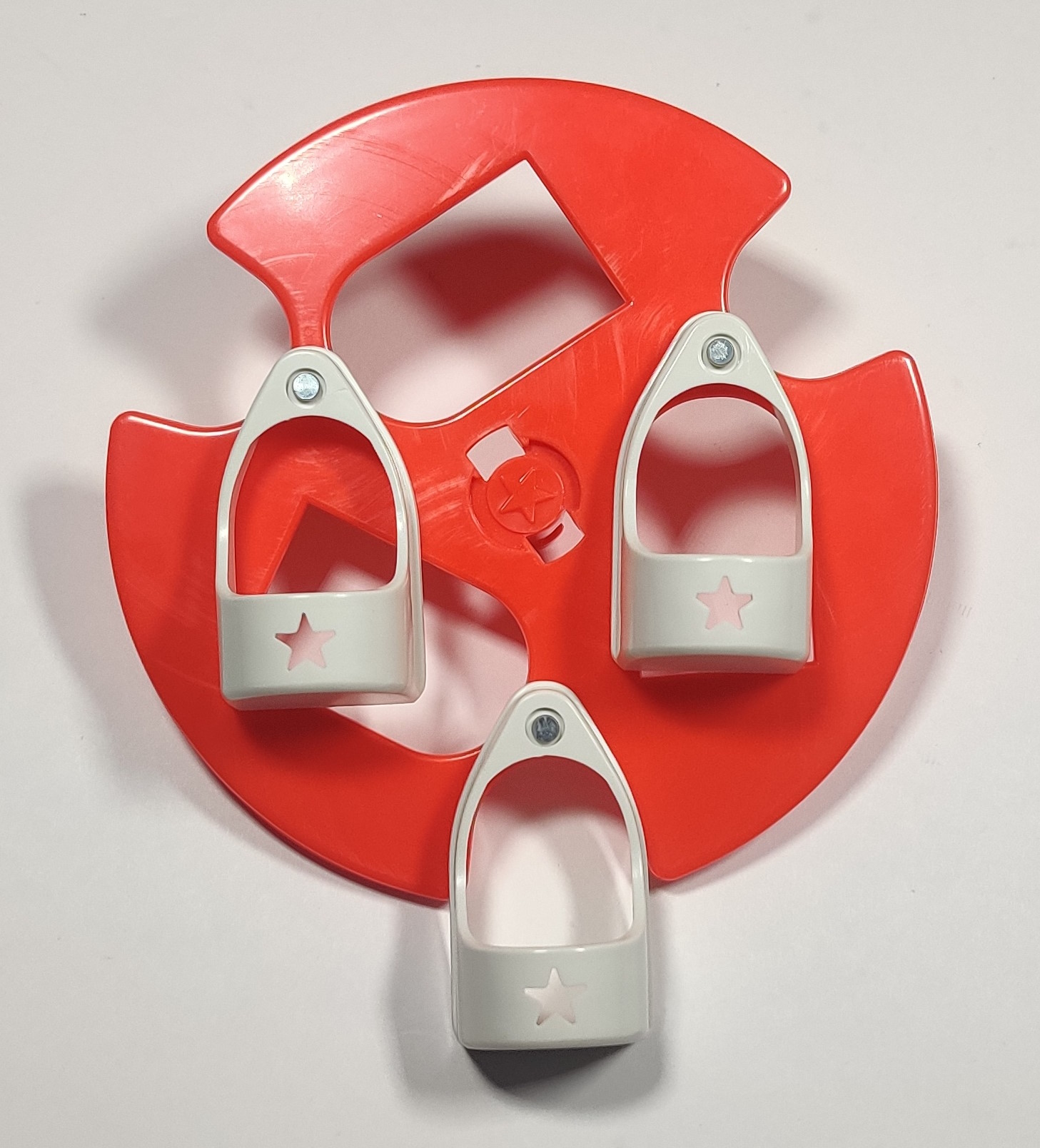
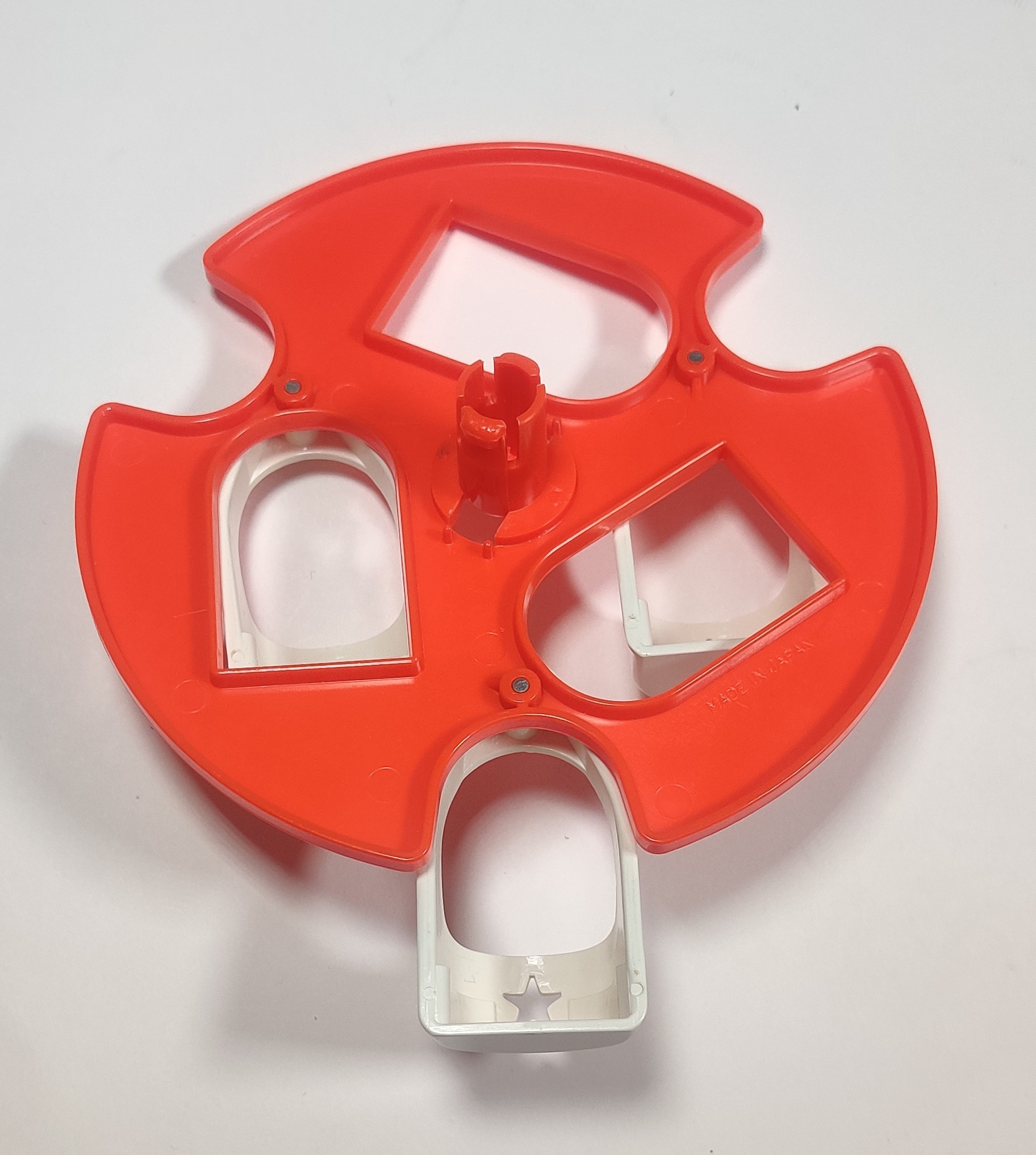
The Ferris wheel itself is an orange disc with three cutouts in the face. White compartments on pivots hang in front of them and form the carriages of the Ferris wheel.
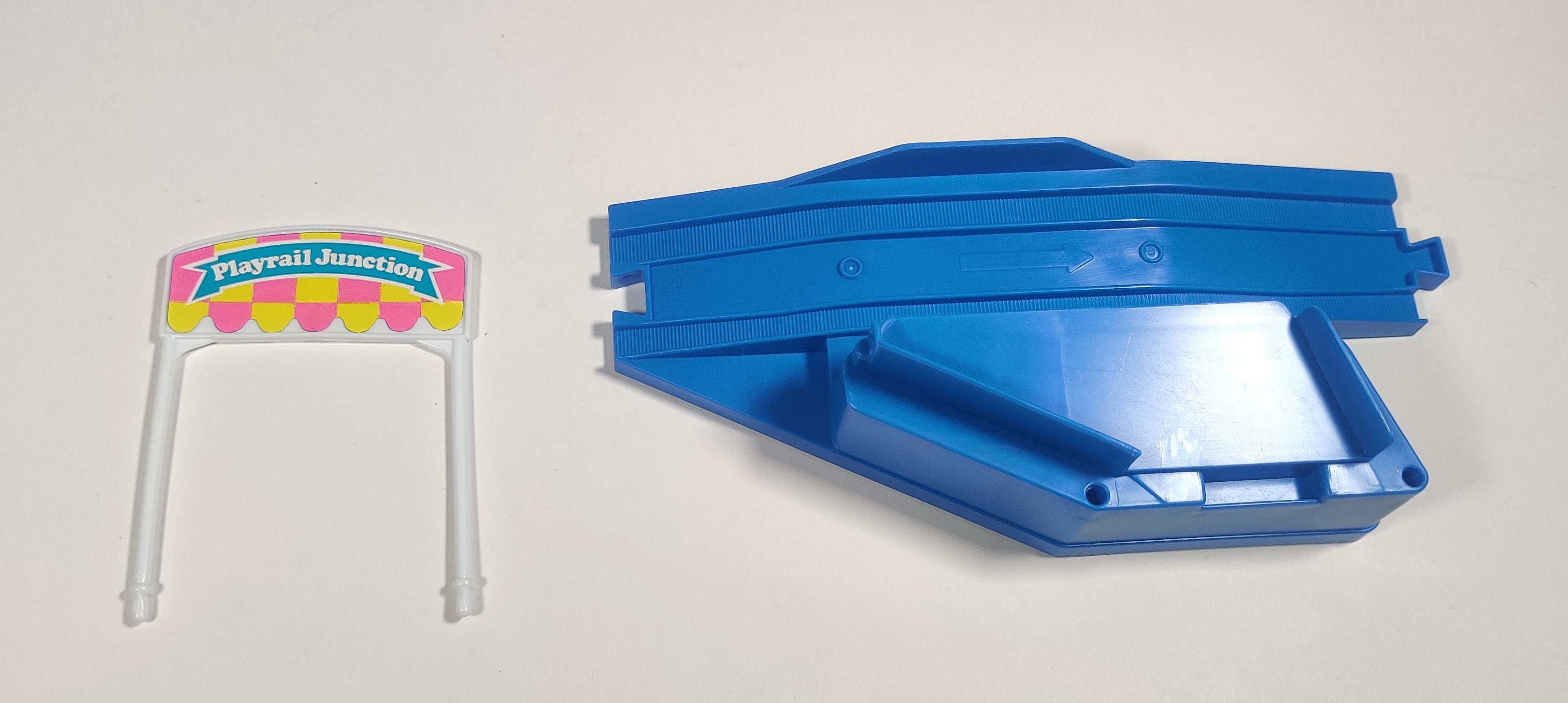
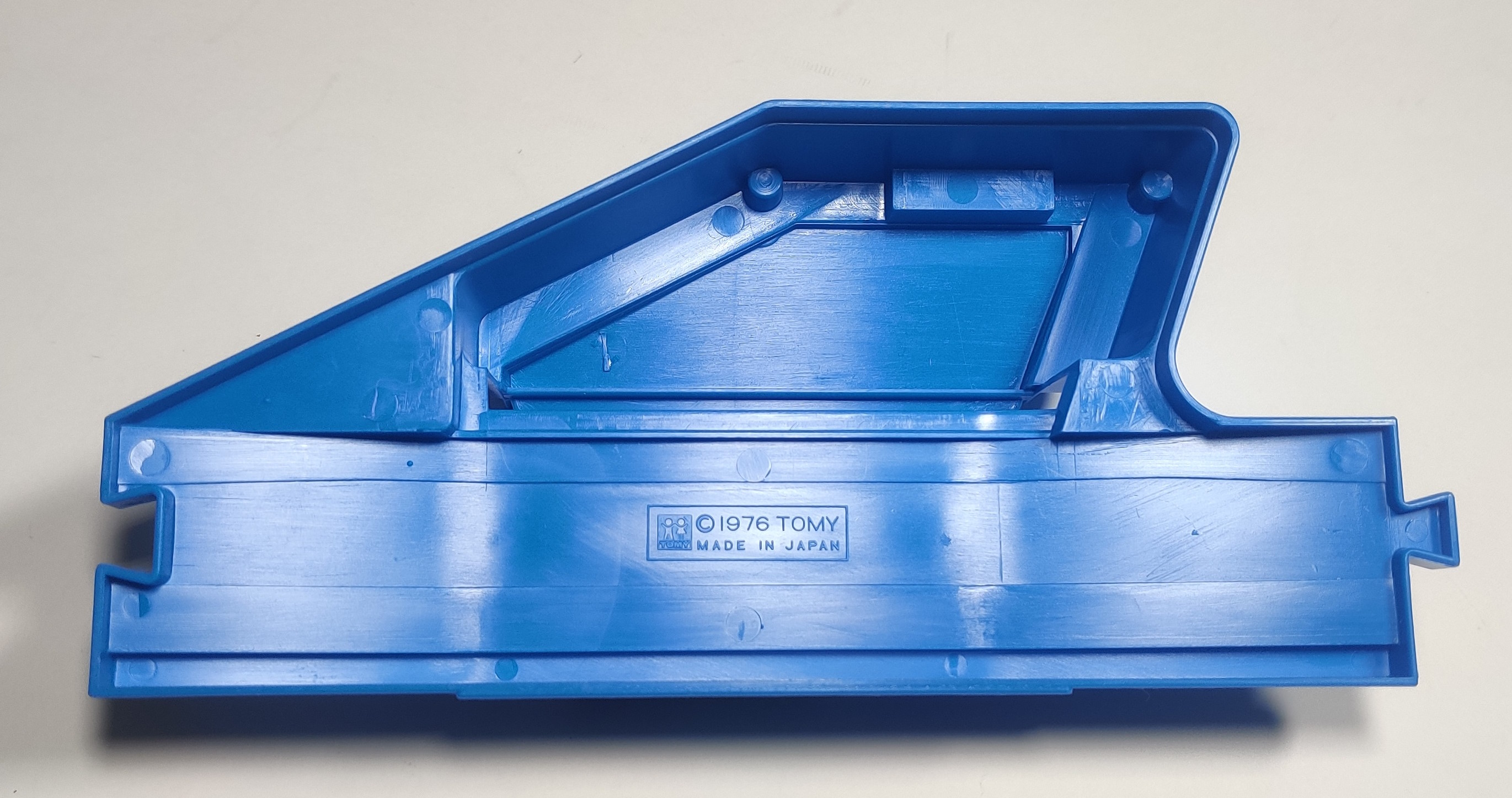

The dropoff station has a "Playrail Junction" sign and tips the carriage up so the rolling friend can roll down a yellow ramp to reach the base of the Ferris wheel.
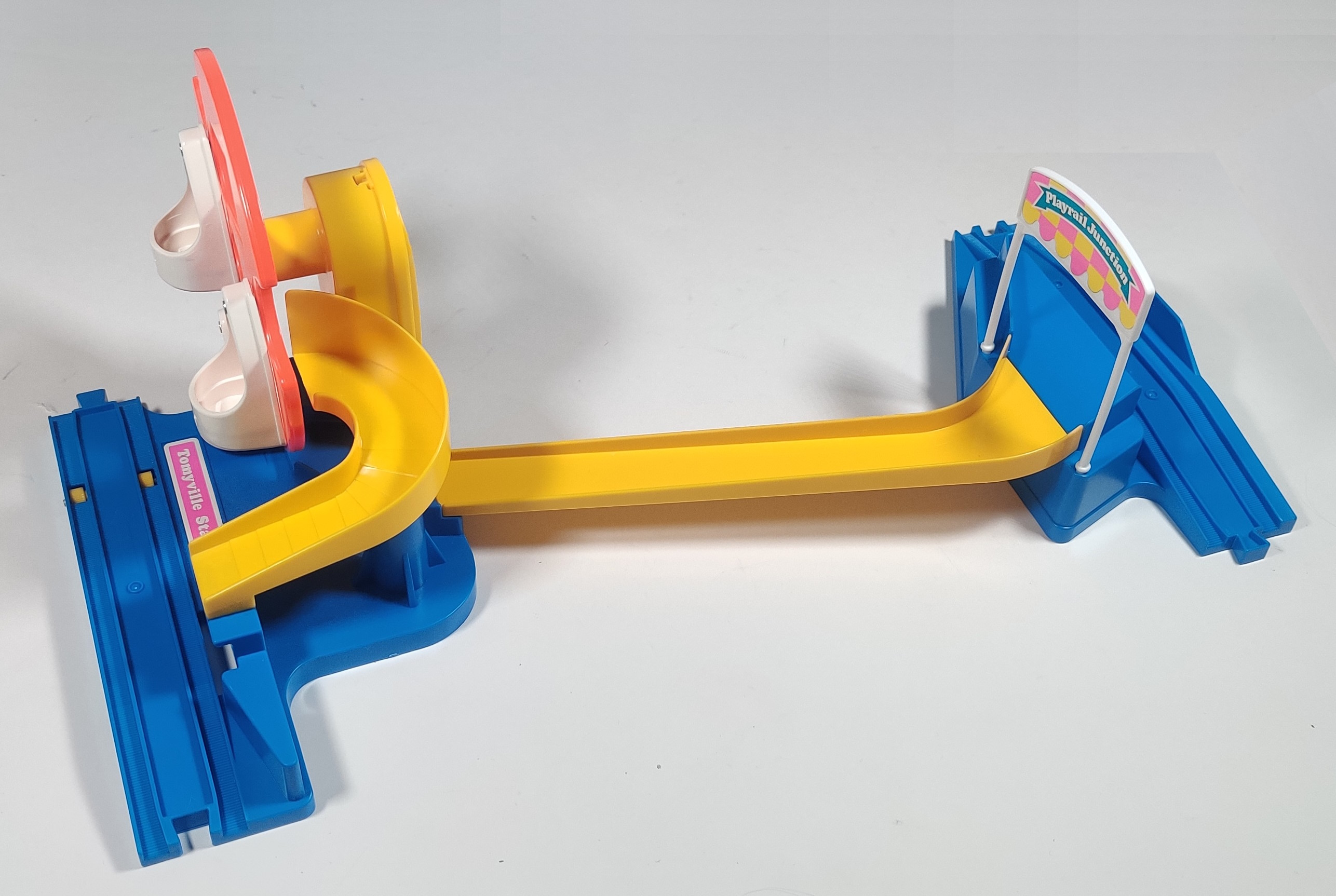
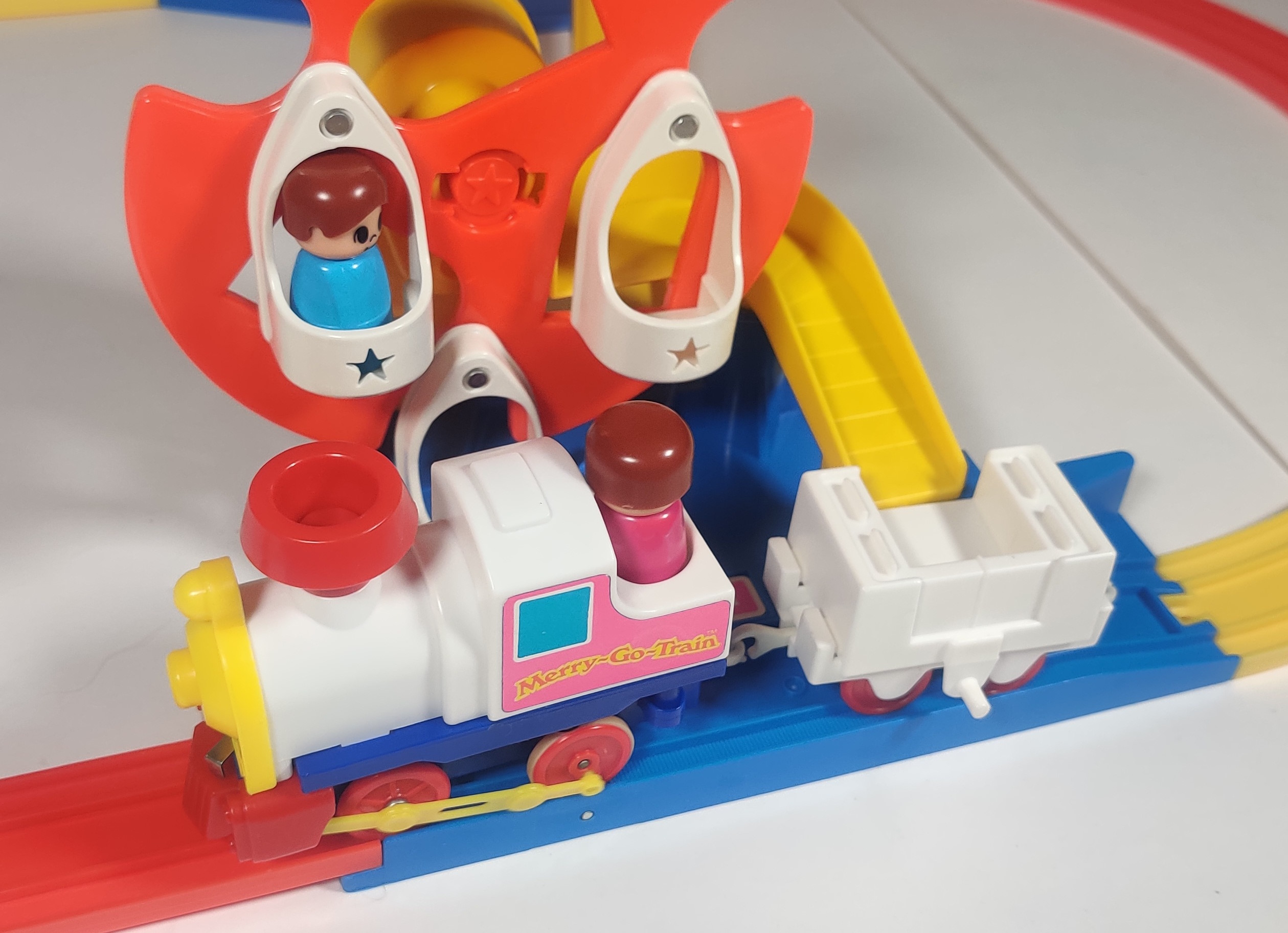

The rolling friend lands at the base of the Ferris wheel lined up with where the openings in the Ferris wheel disc will line up when the train comes and begins to spin it. The slope of the molding moves the friend into the compartment and the train rotates the Ferris wheel around until the molding again deposits the rolling friend onto the yellow slide, where it rolls down and weights the train carriage, releasing the train.
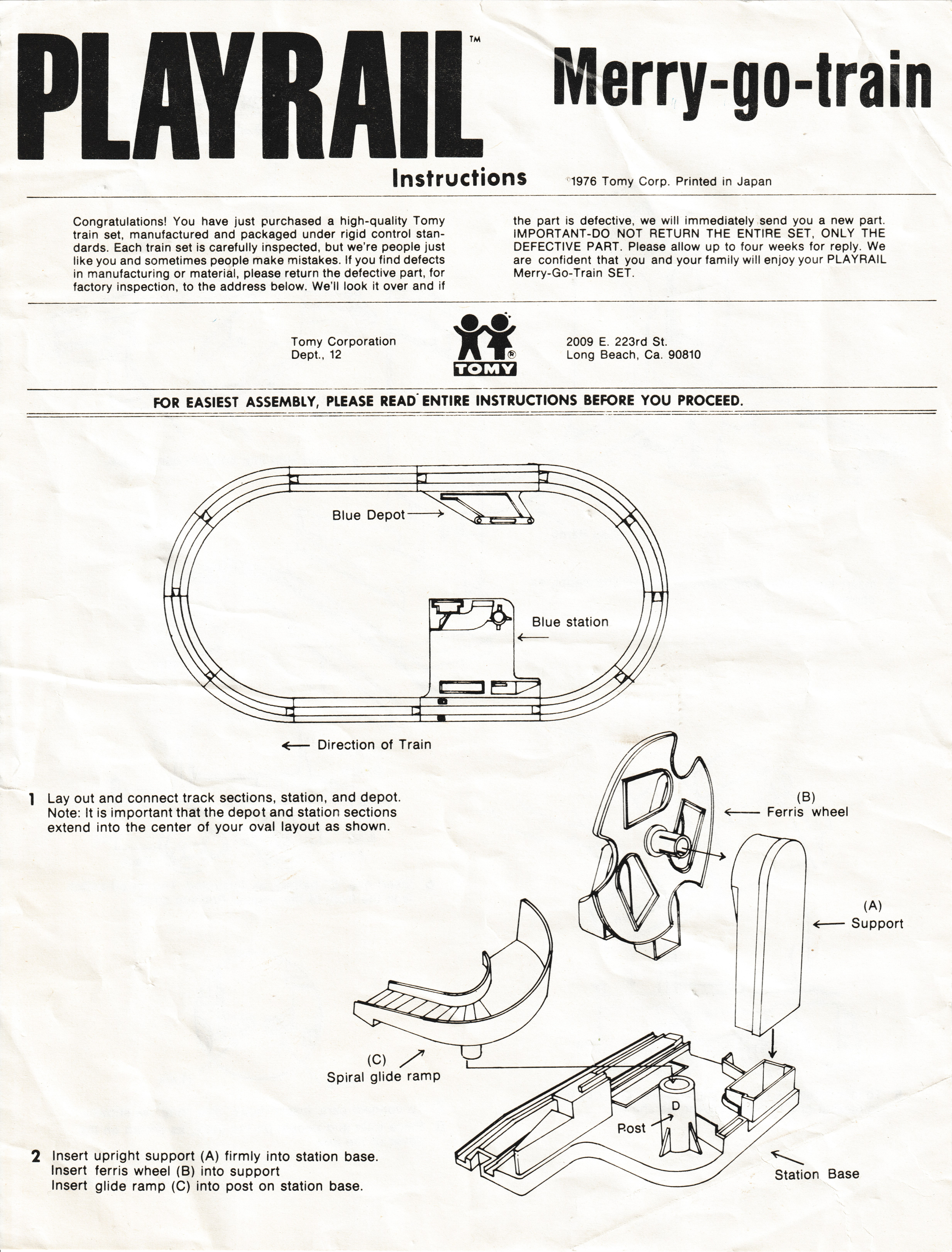
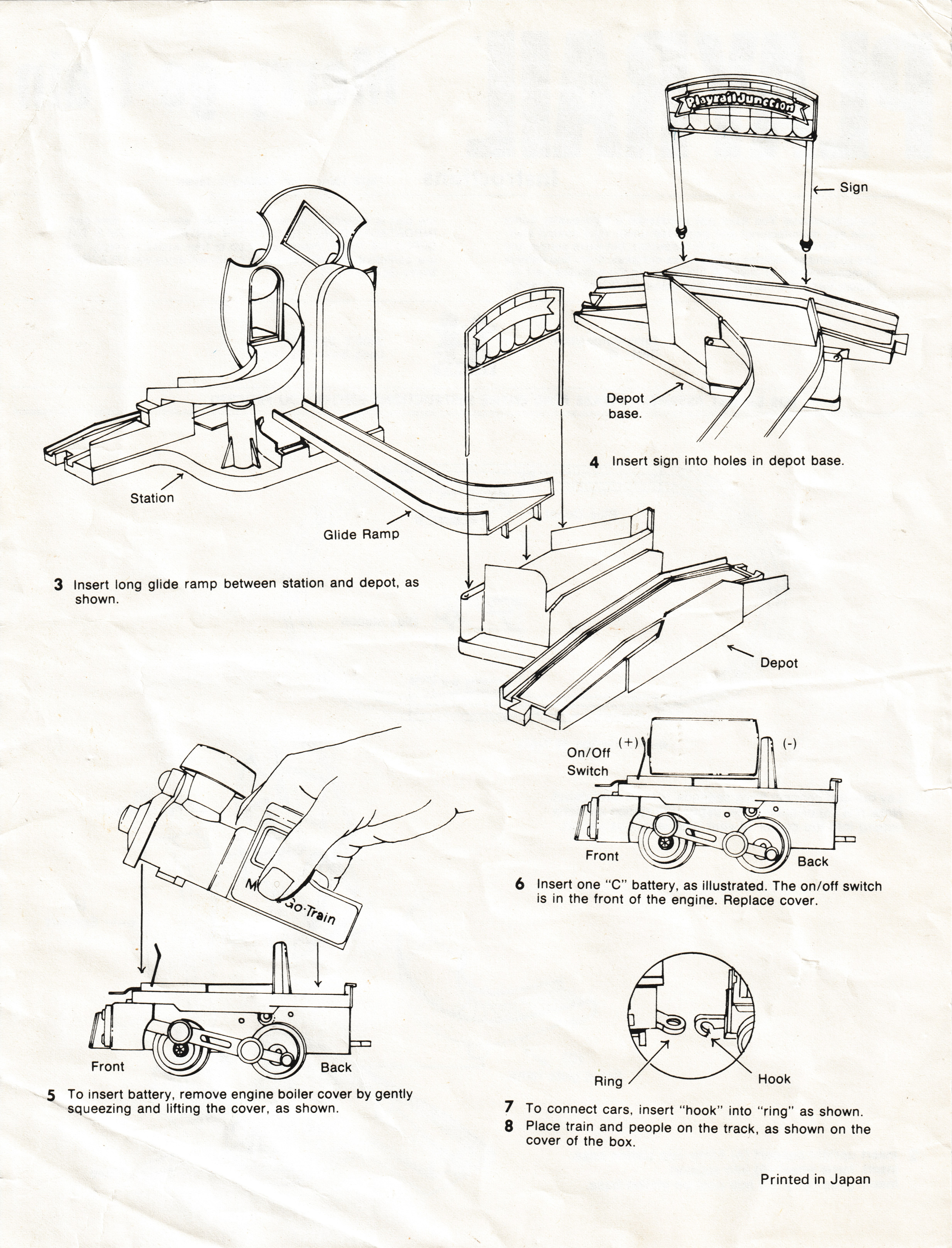
The single-page instruction sheet shows how to assemble the main destinations of the set as well as the track layout and battery instructions.
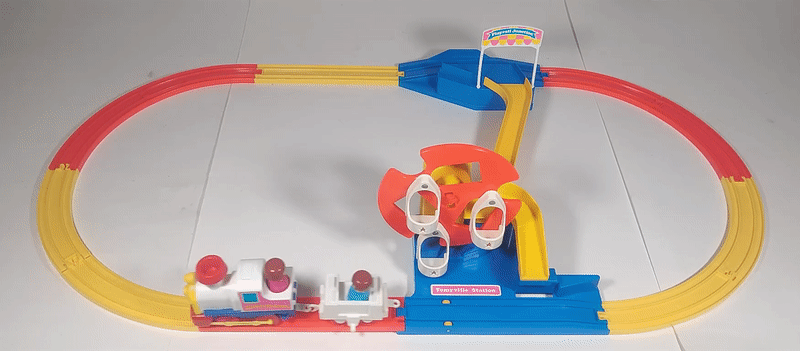
Click for video with sound
The main play loop of the Merry-Go-Train involves the train dropping off a rolling friend at the Playrail Junction where it rolls down to the Ferris wheel as the train circles the right part of the loop. The train runs the Ferris wheel through a partial rotation and then the friend rolls down the smaller yellow ramp and releases the train to go around another time. Like the other Merry-Go and Plarail Land sets aimed at a younger audience, the play loop gets old fairly quick and the set does not really give that much flexibility. The Japanese release of this set use the tighter 90 degree curves and a half-straight dropoff station with shorter attached ramp to make the layout even tighter, with the later Mickey Mouse versions reusing some pieces from other Merry-Go sets and including some additional half straight rails. Even with replaced rubber components, the engine in my set struggles to get the Ferris wheel to run smoothly.

Because the gimmick of the set is entirely reliant on the white passenger carriage, removing it from the train lets the engine just run around the oval. Here is the Tivoli Train locomotive on my American set. The Tivoli version of this set had different stickers on the stations but, I believe, the same color palette.